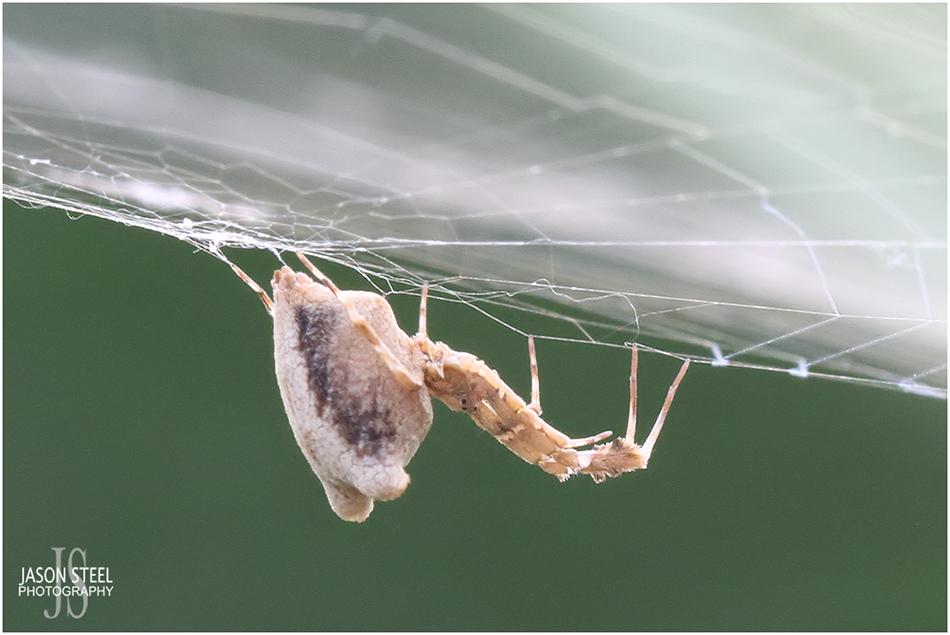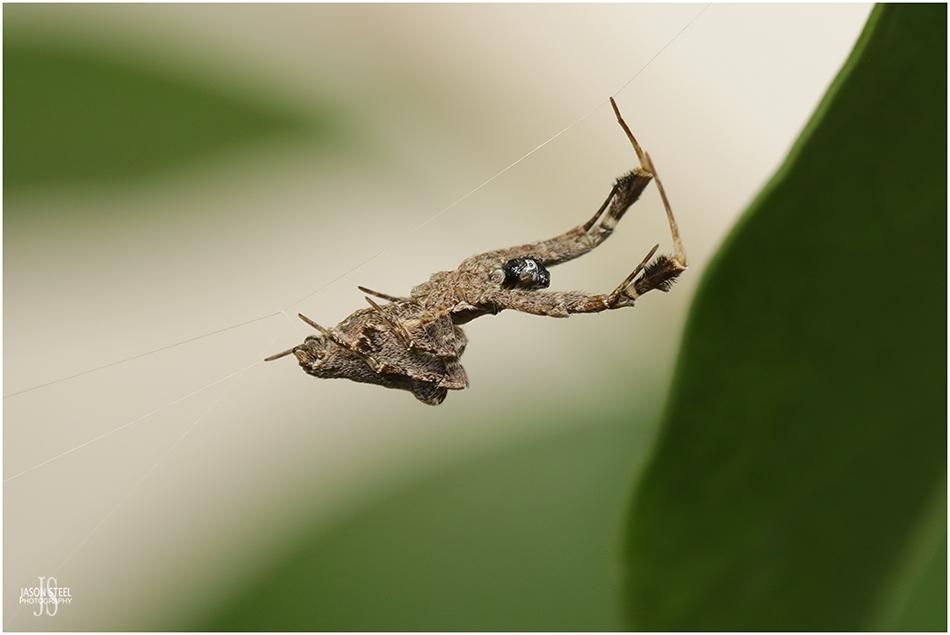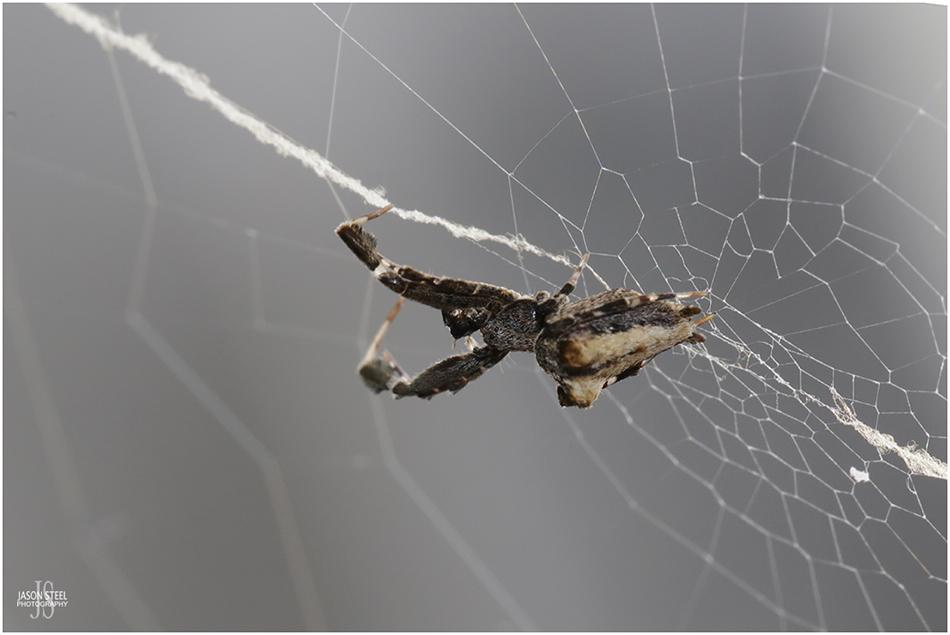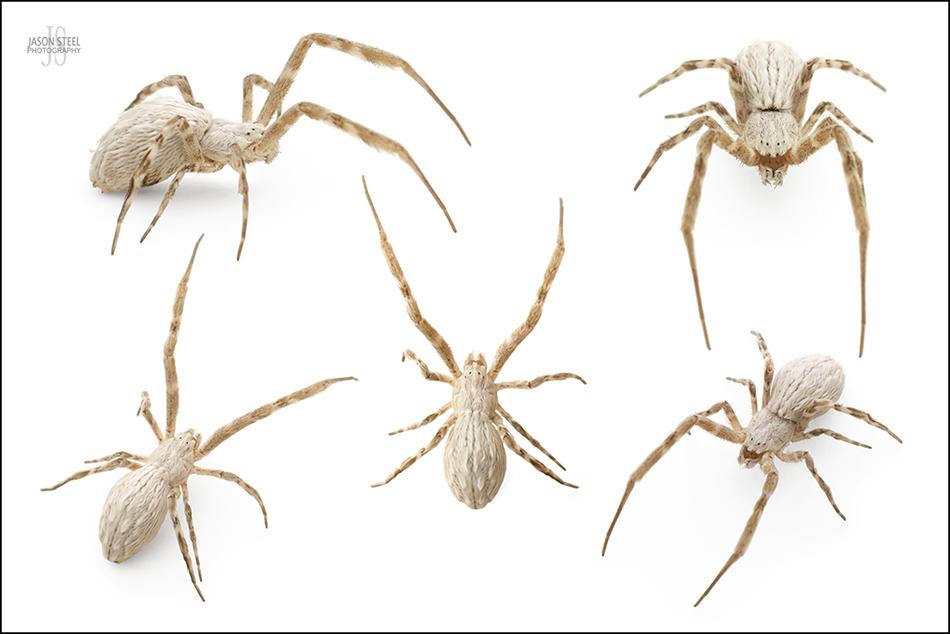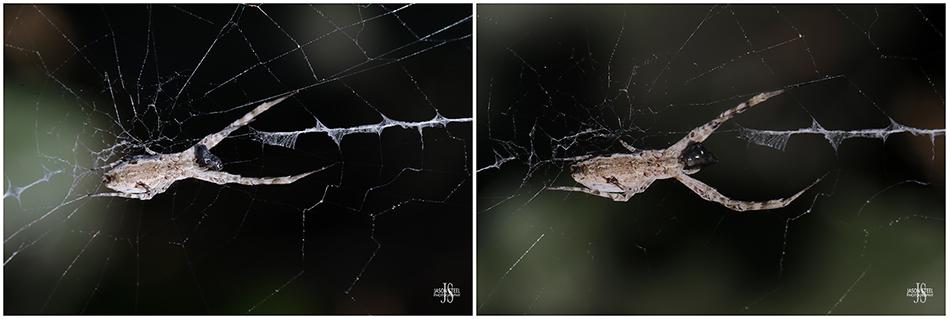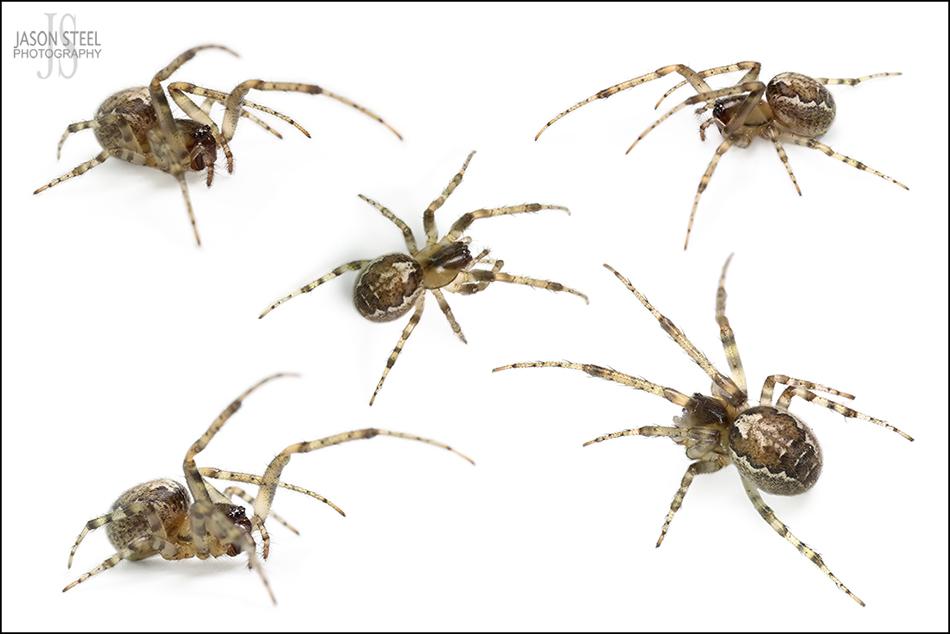
Female Missing-Sector Orb-Weaver (Zygiella x-notata)
Missing-Sector Orb-Weaver (Zygiella x-notata and Zygiella atrica)
A fairly small, and very common, orb-weaving spider, with a maximum body-length of around 11mm for females, but more commonly 6-8mm. Males can reach around 7mm but are typically 3.5-6mm. Widespread across the UK especially in the SE of England. Often found in warmer areas on the outside of buildings and window frames. Adult Missing-Sector Orb Weavers build an orb web with two of the upper sectors missing connecting threads. Between these two bare sectors the signal thread is usually located which leads to the spider's retreat. Occasionally these spiders build their webs with missing sectors at the bottom of their webs instead of the top. Missing-Sector Orb-Weavers sit in the middle of their web during the evening and night time, and web repairs are often performed in the early hours of the morning.
The females of both species of Missing Sector Orb Weaver can usually only be distinguished under a microscope. However, the males are far easier to distinguish as Zygiella atrica have extremely long pedipalps. In my SE London garden Zygiella x-notata is one of the most common species of spider, and can be seen in good numbers on my garden fence, garden shed, on the walls and window frames of my house, on ivy, and on various bushes. The Missing Sector Orb-Weaver is an extremely hardy species and specimens can easily be found active even in the colder months of the year.
The annulated legs and abdominal "leaf pattern" of Zygiella species are often mistaken for the "skull" markings of sub-adult Steatoda nobilis, the Noble False Widow, that also have annulated legs. Both species are also often found living within close proximity of each other. Even from a distance the easiest way to distinguish between the two is to look at the webs. Whilst Steatoda nobilis make messy tangled webs, Zygiella species make their pretty orb-web, with a missing section, usually in an upper corner of the web.
Zygiella x-notata can be found in many habitats but are often regarded as a synanthropic species. Zygiella atrica are more commonly associated with wooded areas, or agricultural land, but they can on occasion also be found around buildings too.
LINK 1 LINK 2 LINK 3 LINK 4 British Arachnological Society Factsheet
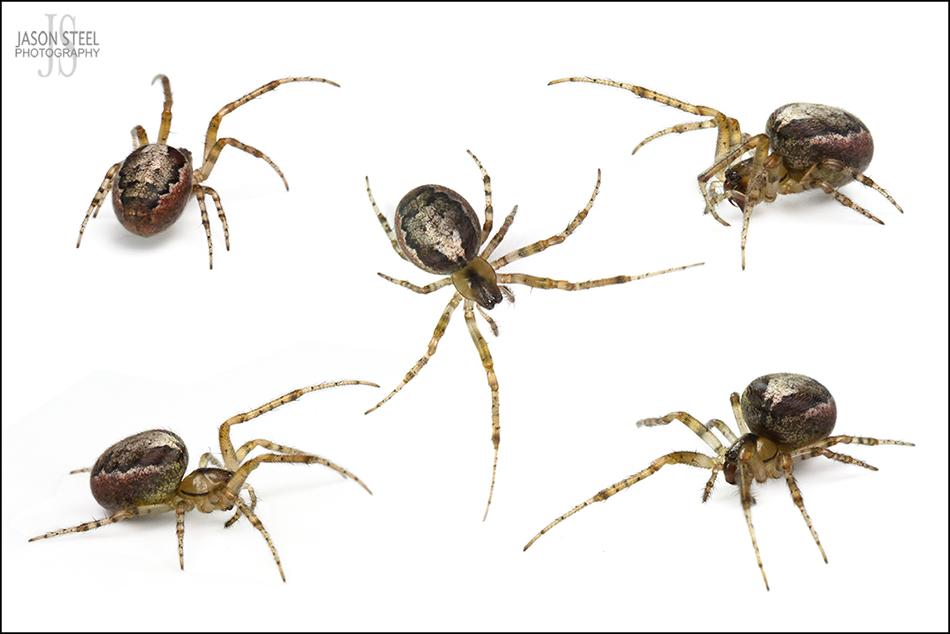
Female Missing-Sector Orb-Weaver (Zygiella sp)
Females of both Zygiella x-notata and Zygiella atrica Missing-Sector Orb-Weavers can be very difficult to tell apart. However, if a specimen has dark grey patches at the front of the abdomen either side of the midline, then the spider is likely to be Zygiella x-notata. If the dark patches are pinkish red then the spider is more likely to be Zygiella atrica. Because of this subtle, and not always reliable, difference Zygiella x-notata are sometimes referred to as the Silver-sided Missing-Sector Orb-Weaver, and Zygiella atrica are sometimes referred to as the Red-sided Missing-Sector Orb-Weaver
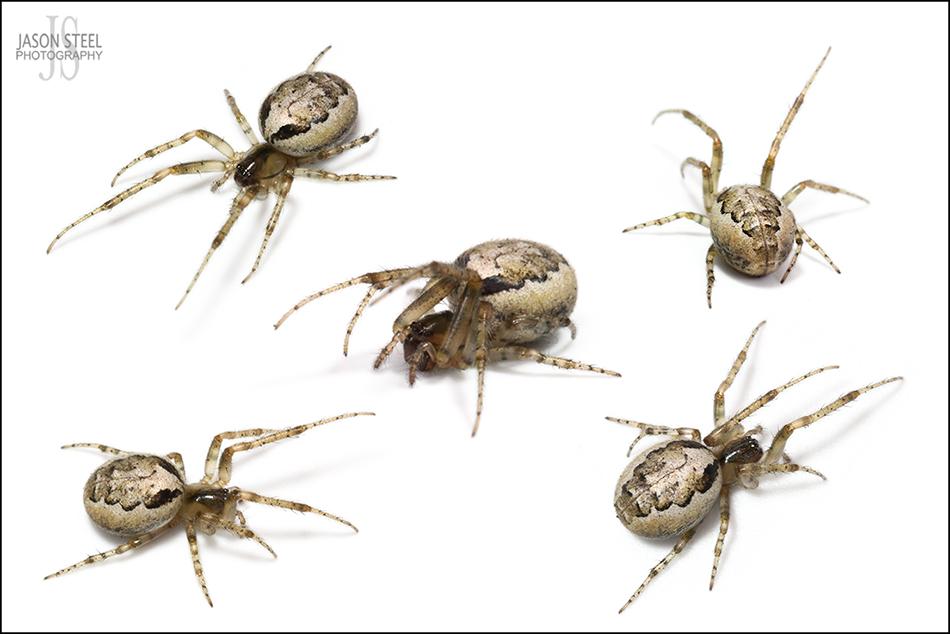
7mm female Missing-Sector Orb-Weaver, Zygiella x-notata, found in a north Kent garden 17th September 2017.
The abdomen of this species is highly variable in colour as the three images above demonstrate. They can range from grey, silver, gold, brown or red. But all have the "oak-leaf" shaped pattern on the top of the abdomen. Missing-Sector Orb Weavers often venture into homes during the colder winter months where they frequently build webs on the inside of windows.
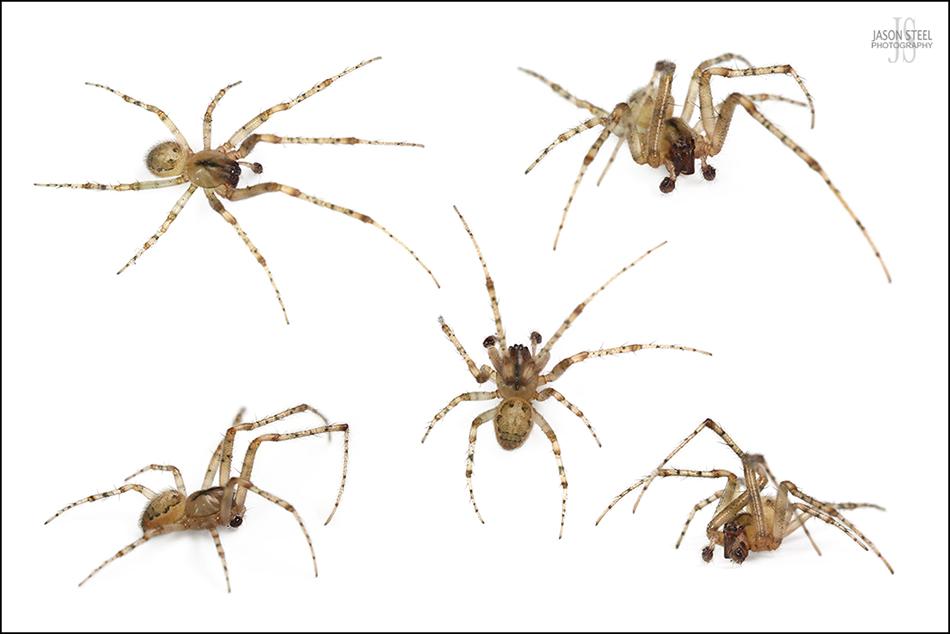
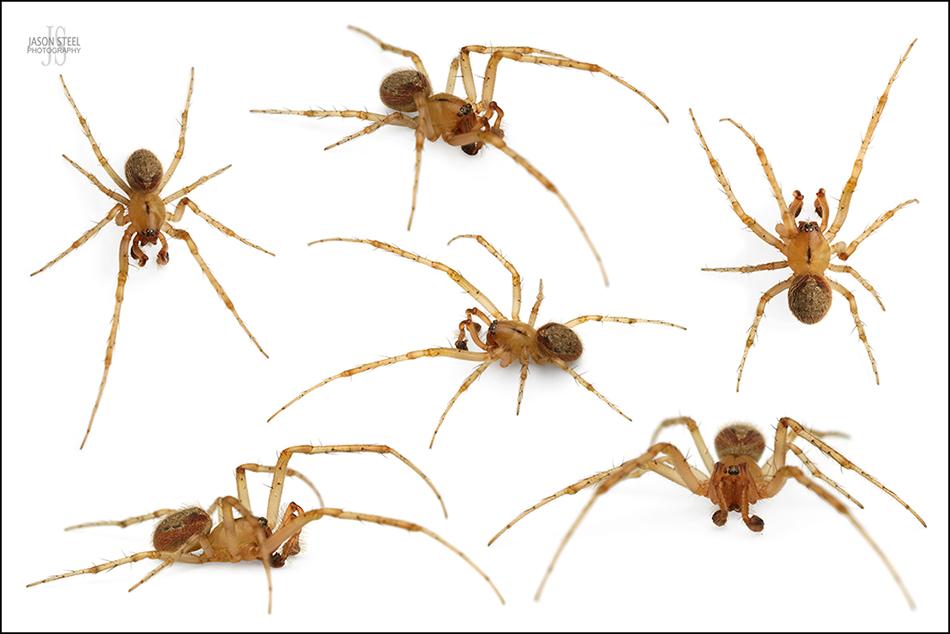
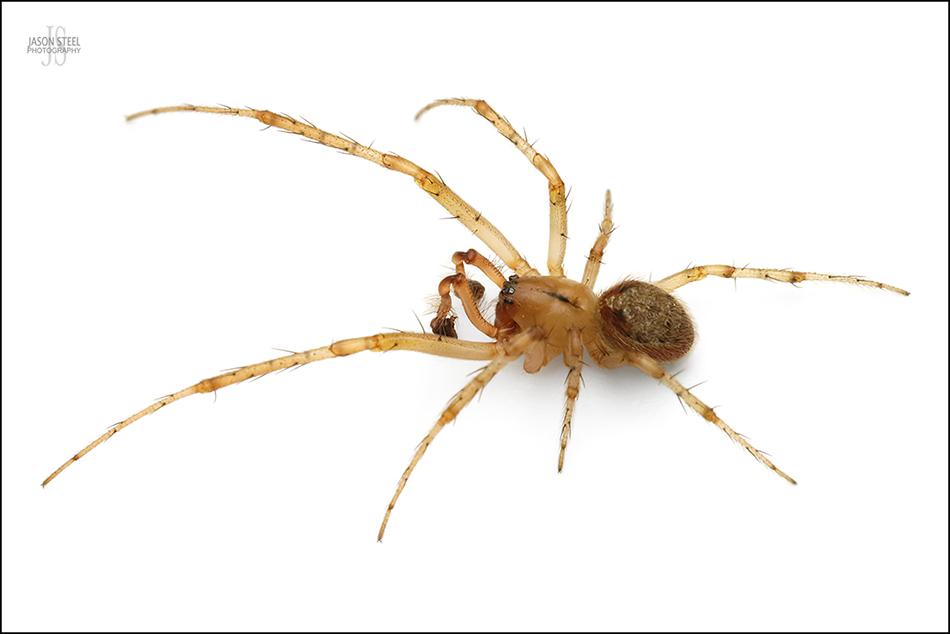
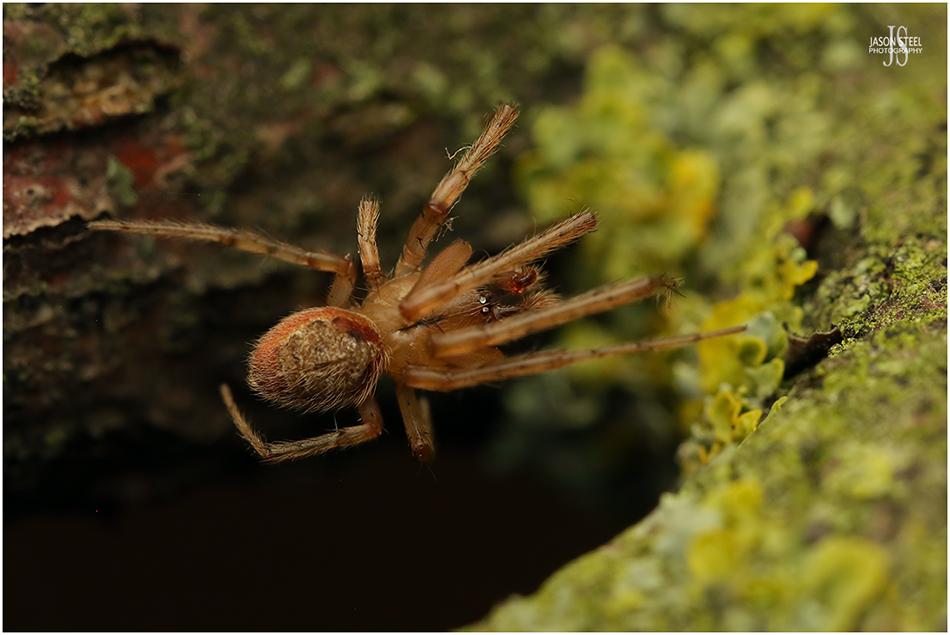
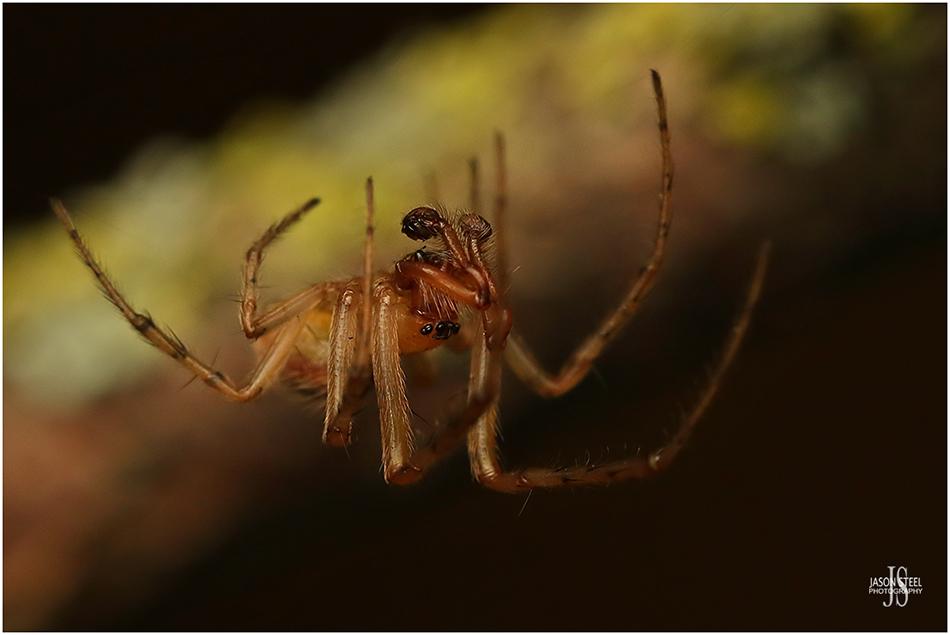
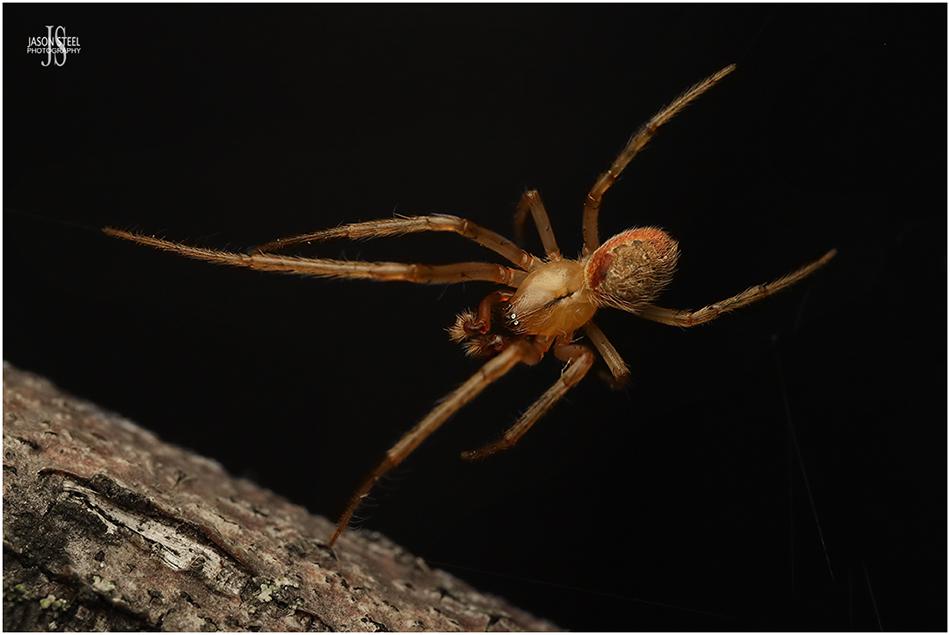
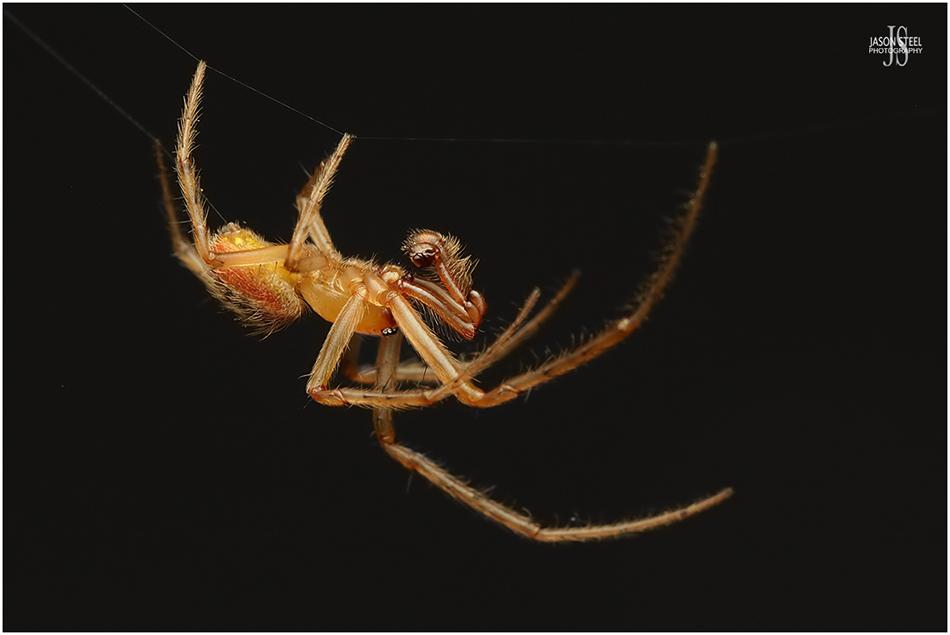
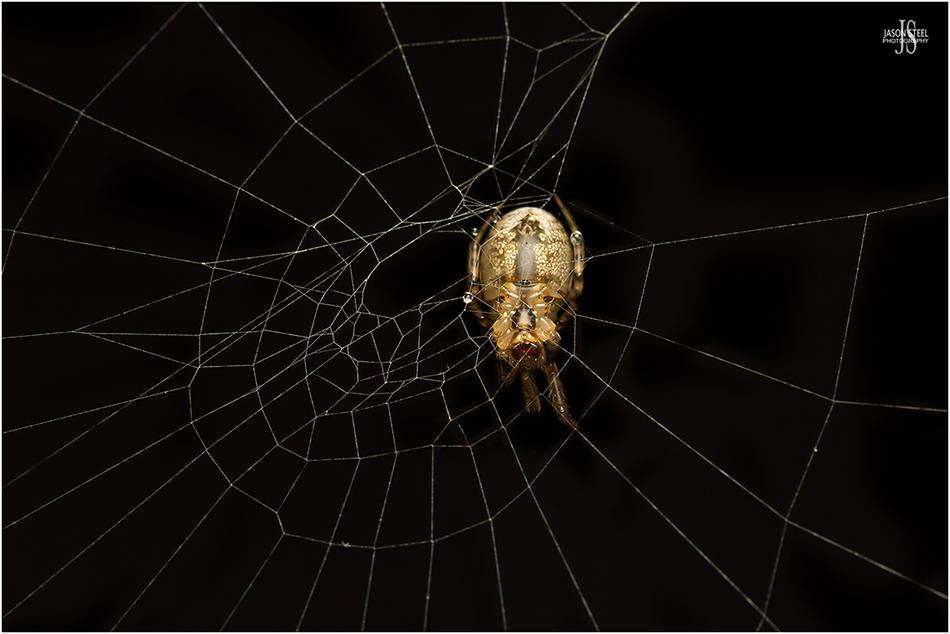
Female Missing Sector Orb Weaver (Zygiella x-notata) in web. Photographed at night on my garden shed in SE London 16th November 2020.
Typical of webs made by the Missing-Sector Orb Weaver Spider the top right corner of the web can be seen here to be missing in the image above. The missing sector of the web made by this species can be missing from anywhere in the web but is usually missing from the top half.
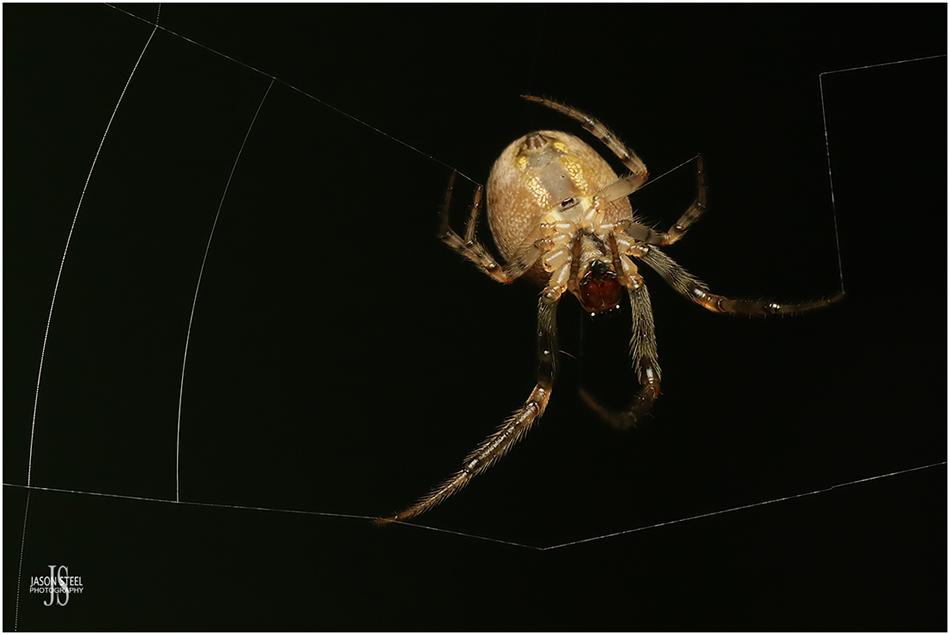
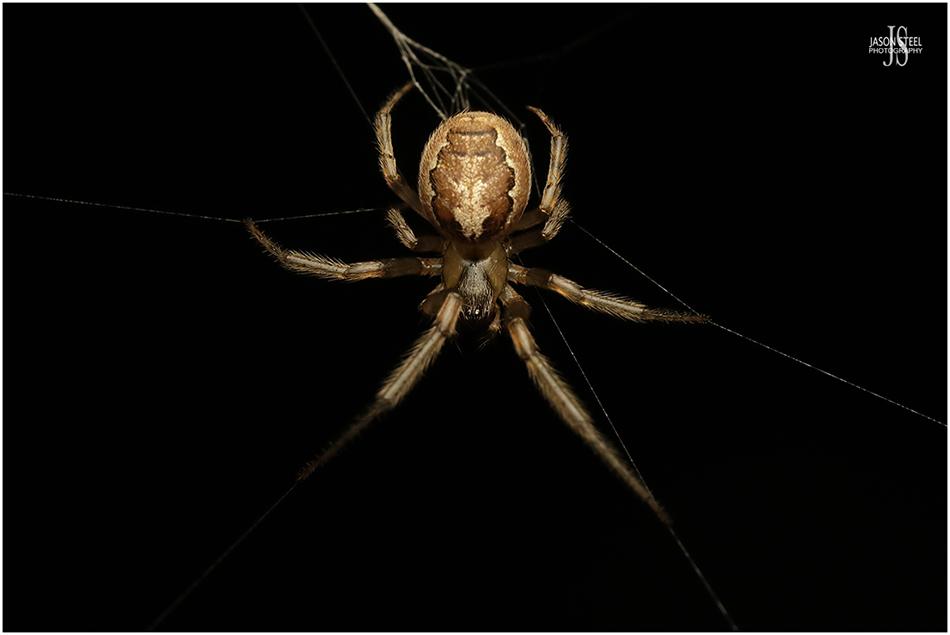
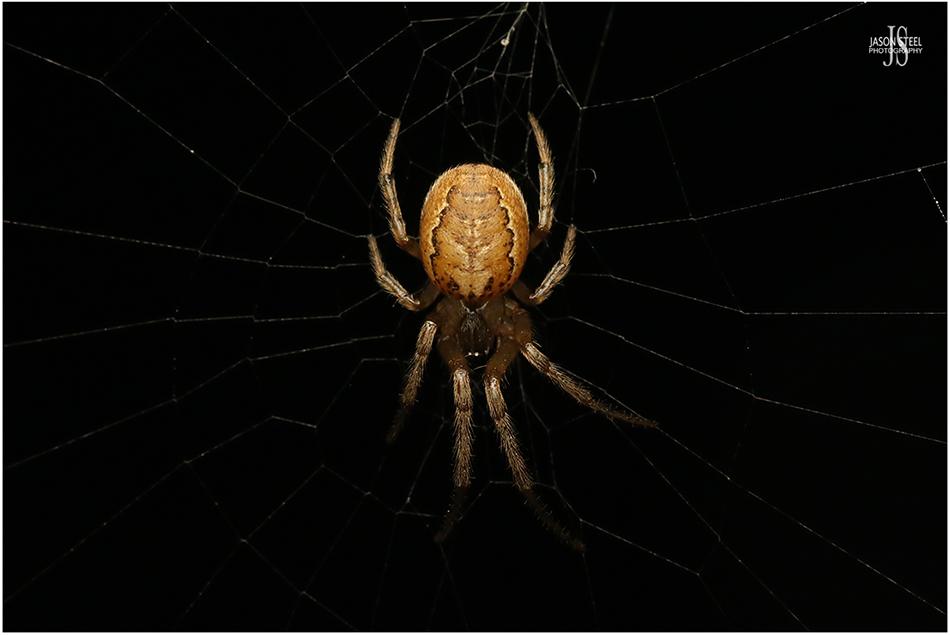
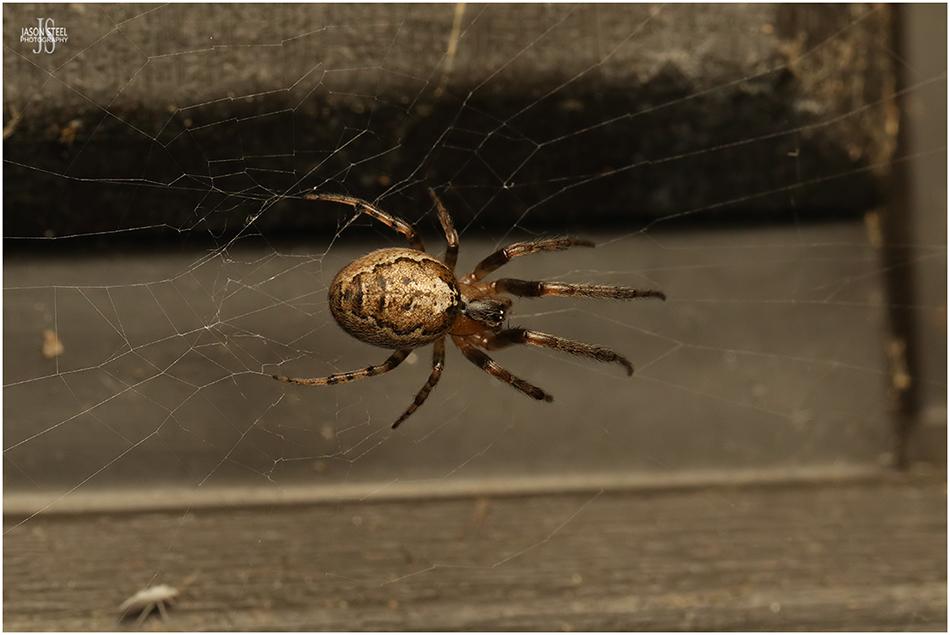
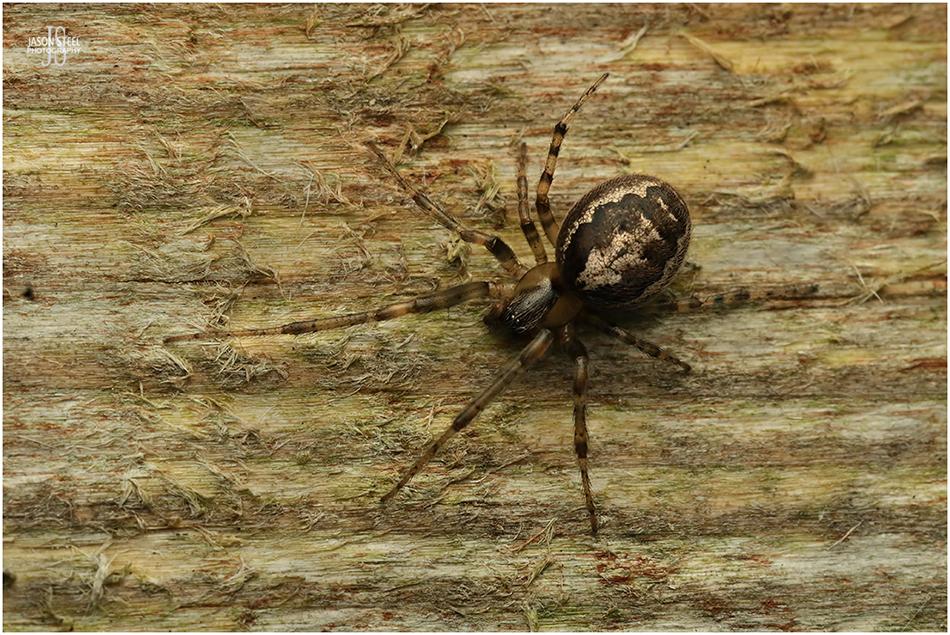
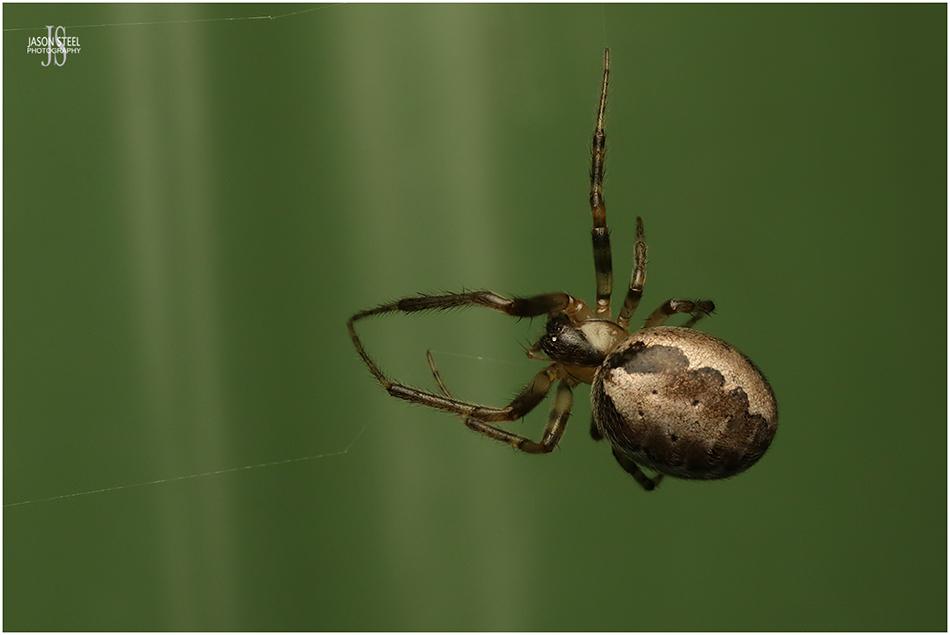
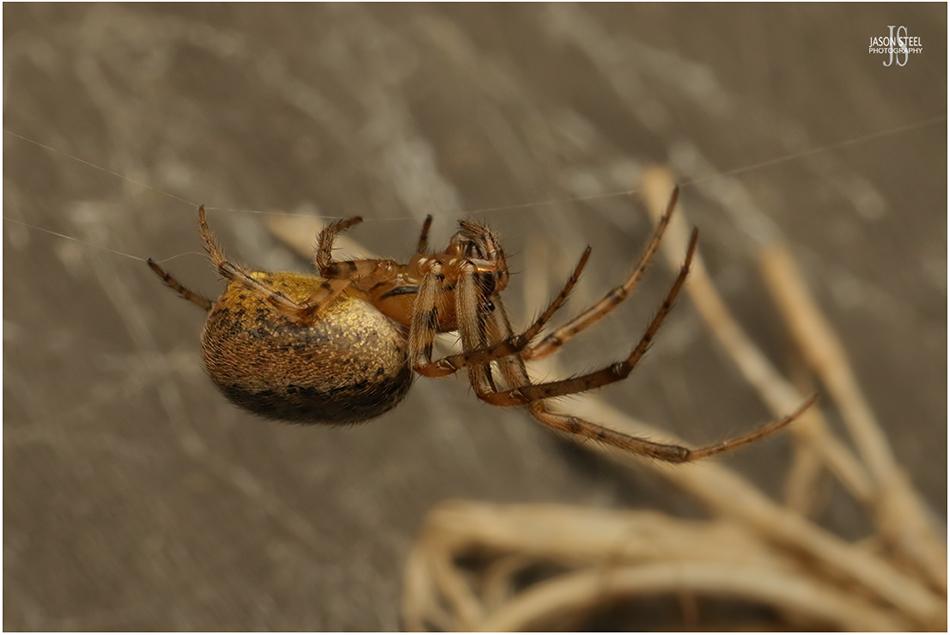
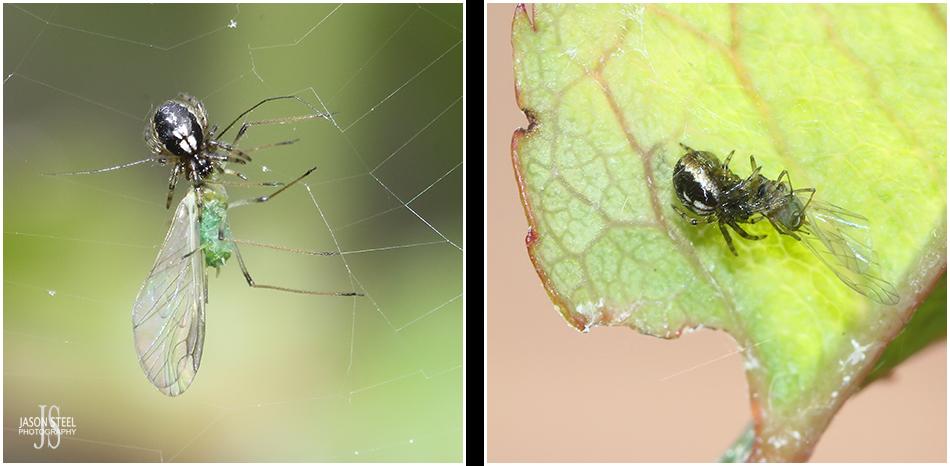
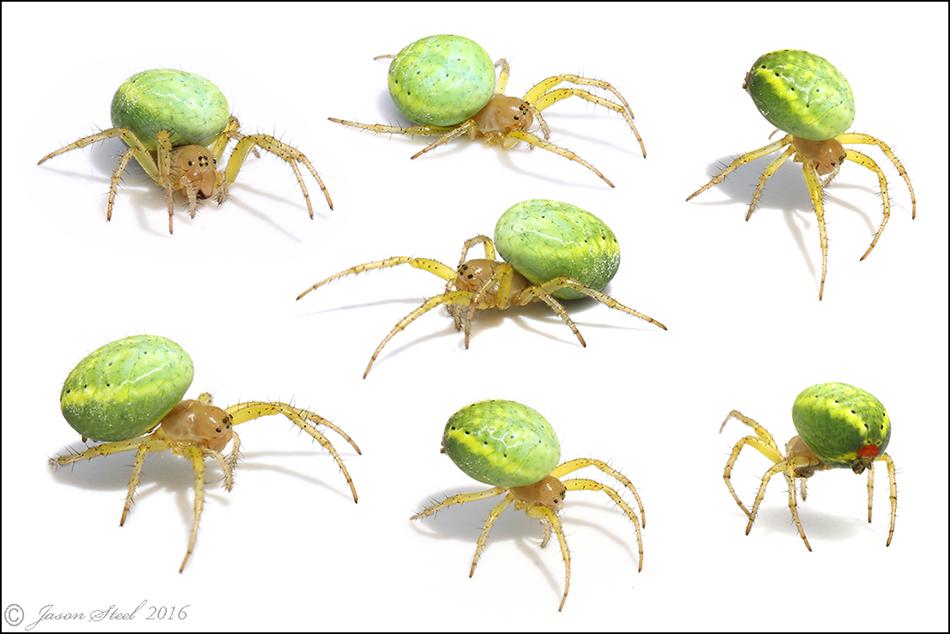
6mm female Green Orb-Weaver Spider
Green Orb-Weaver Spider / aka Cucumber Spider (Araniella cucurbitina or opisthographa)
There are two very similar species of Green Orb-Weaver Spider in the UK that can usually only be identified with a very close-up photo of the reproductive organs or by inspection under a microscope. The Green Orb-Weaver Spider is very small with a body length of only 4-6mm. Green Orb-Weaver Spiders are a common native species that can be found throughout the UK and northern Europe. Despite their bright and almost fluorescent green colour theses tiny spiders can hide well camouflaged amongst bushes, plants and hedgerows. They usually go completely unnoticed until they stray from their usual habitat onto white uPVC windows or door frames in residential areas. The abdomen is bright green / yellow with small black dots. The underside of the abdomen also has a red spot, but this can fade in mature specimens. Young spiders may have a red spot on their head as well. Newly hatched spiderlings are red but their colour changes to brown before the autumn arrives.
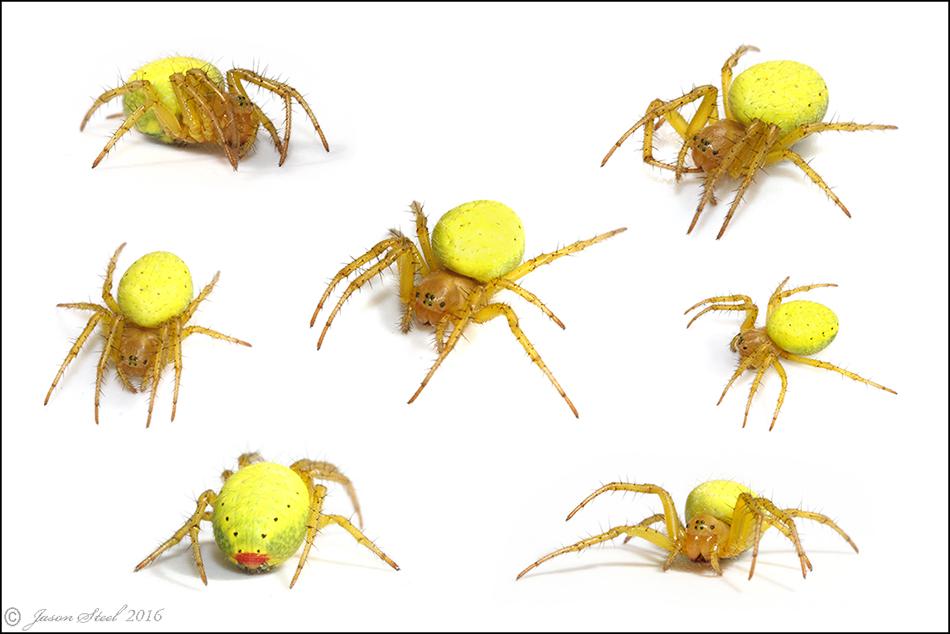
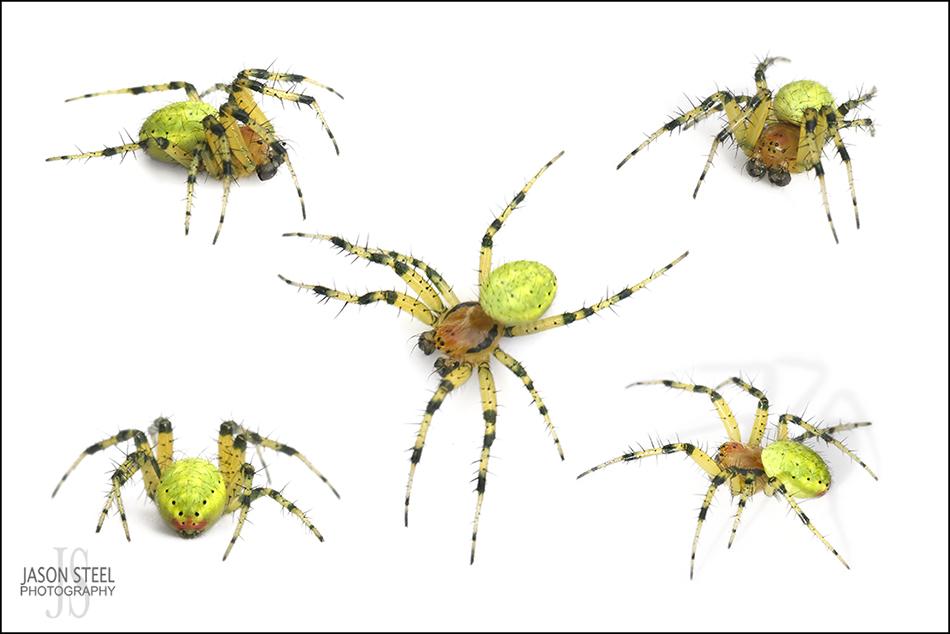
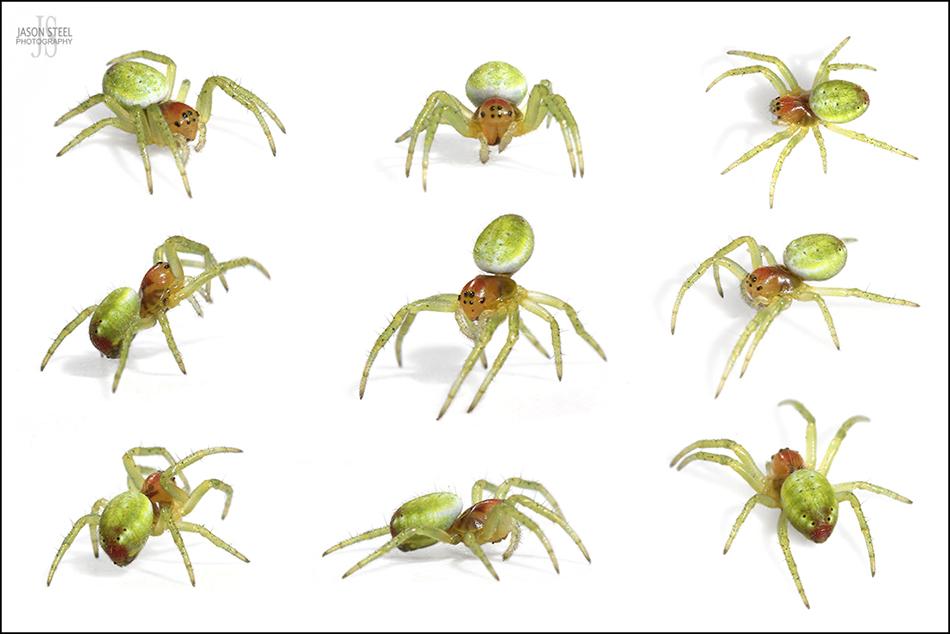
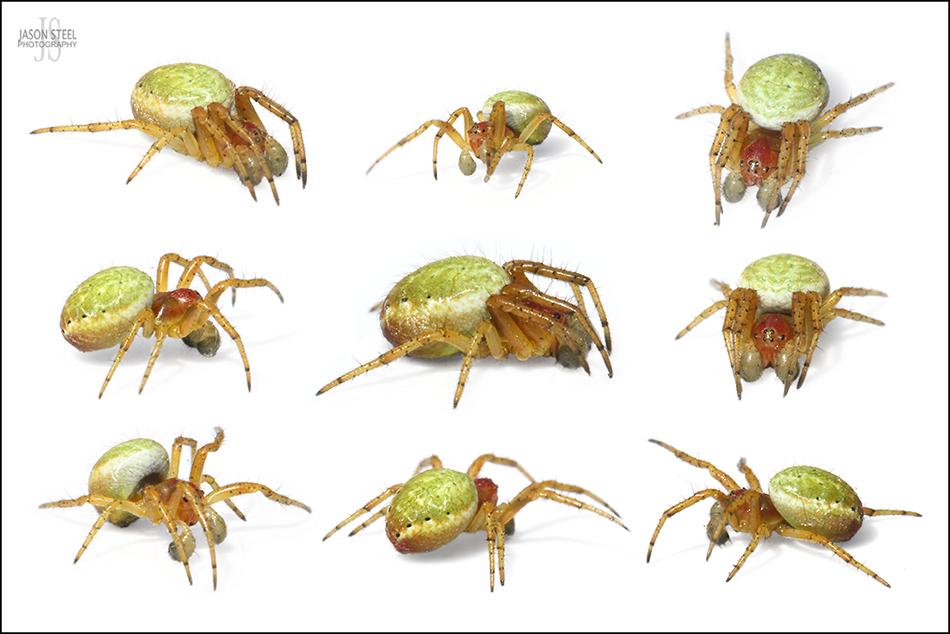

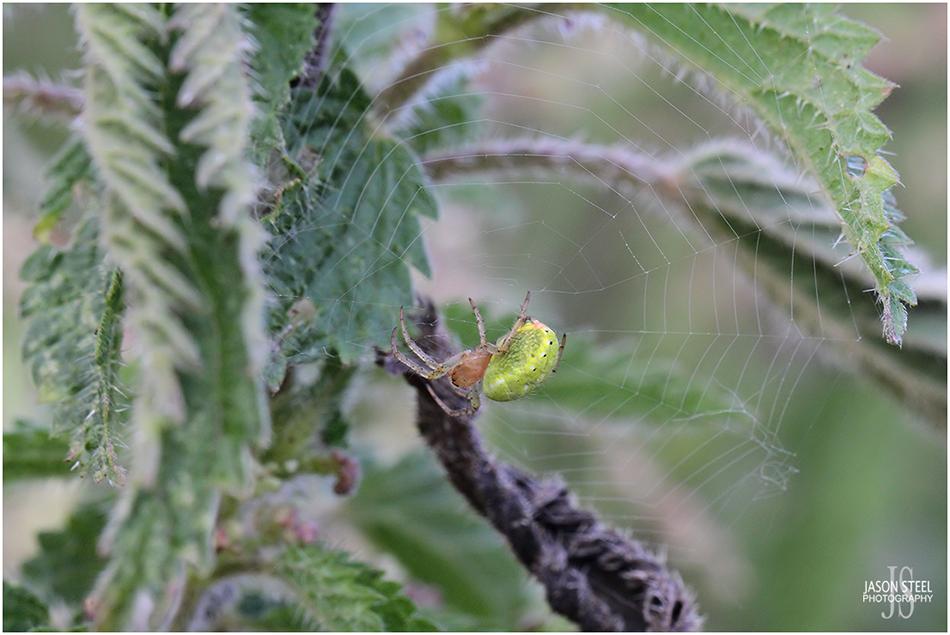
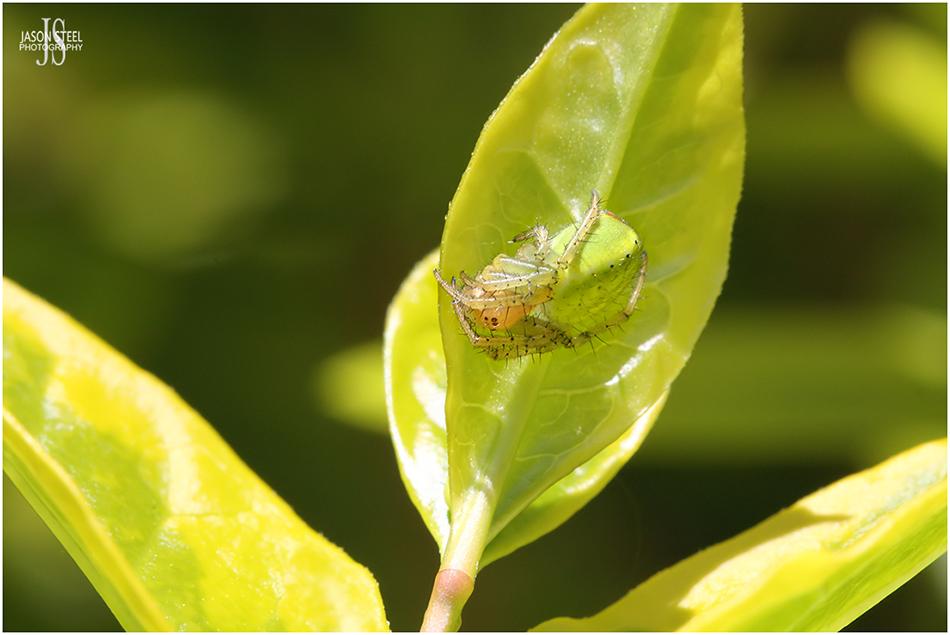
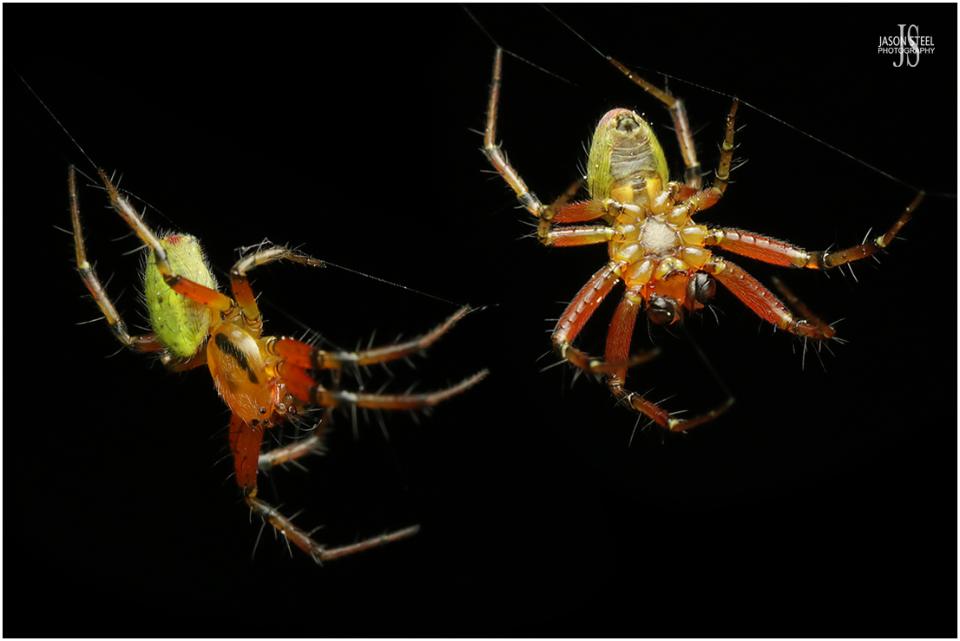
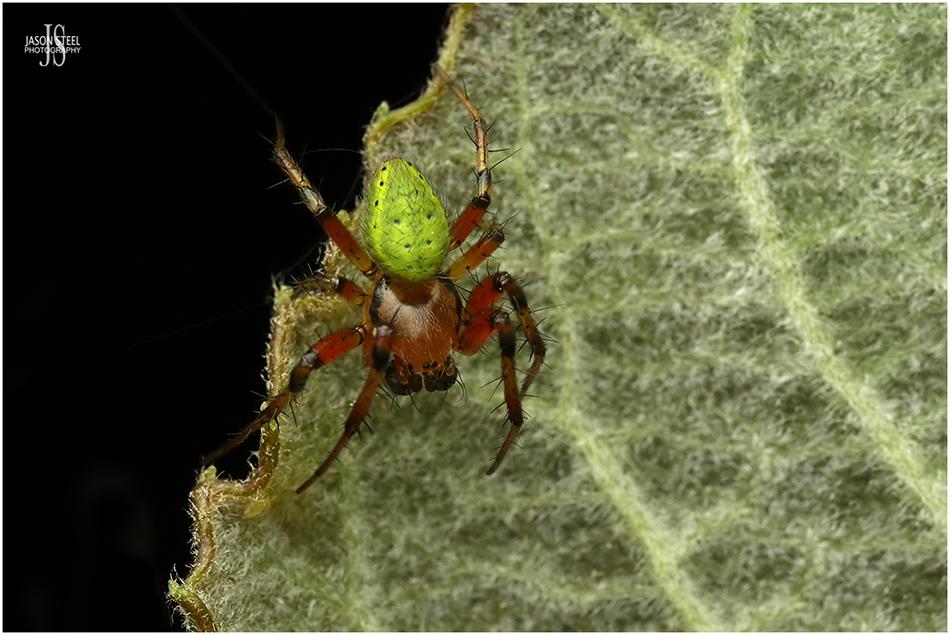
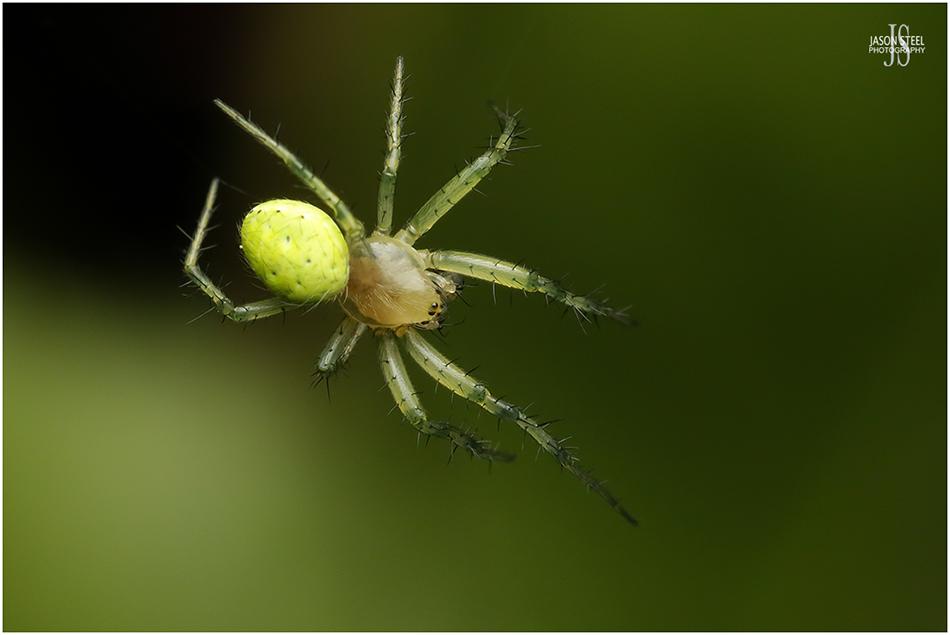
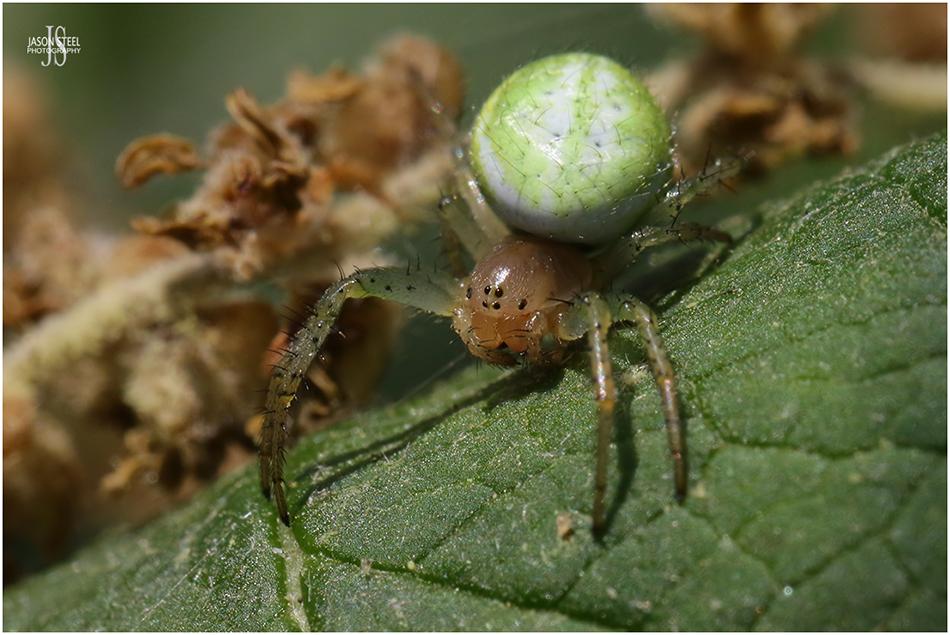
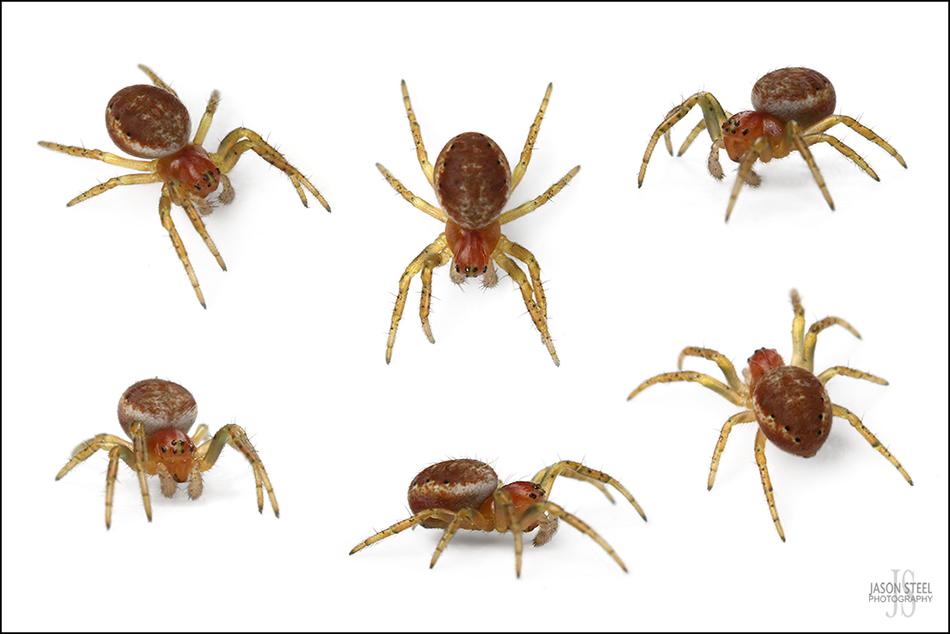
2.5mm juvenile female Araniella sp Orb-Weaver Spider - (Araniella cf displicata).
Six-Spotted Orb-Weaver Spider (Araniella displicata)
The Six-Spotted Orb-Weaver is a small Orb-Weaver Spider with very limited distribution in the UK where it has been recorded in low numbers at a few known sites in the SE of England. Adults have a body-length of around 4.5-8mm. Usually encountered in early to mid-summer in bushes and lower branches of trees, especially pine trees in areas of heather. Adults can usually be found from March to June. After that juveniles can still be found and this species over-winters as a sub-adult. This species is highly variable in colour and can be brown, orange, red or yellow or a combination of these colours. The spider above is a young juvenile Araniella sp which may be the rare Six-Spotted Orb-Weaver. However this species is inseparable from others of its genus at this stage as juvenile Cucumber Spiders can be very variable in colour too, including shades of brown, and can appear identical to juvenile Six-Spotted Orb-Weavers at this young age.
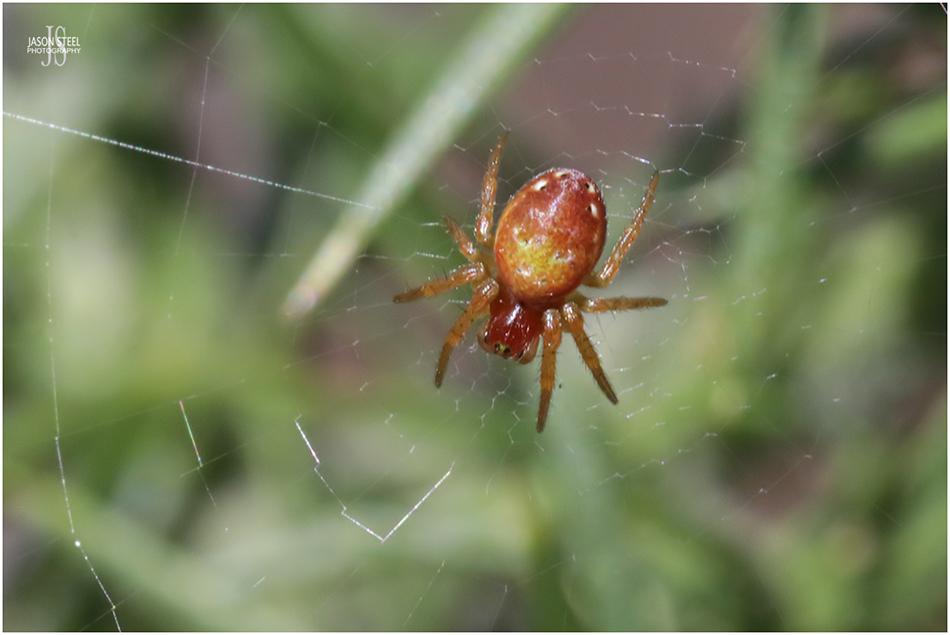
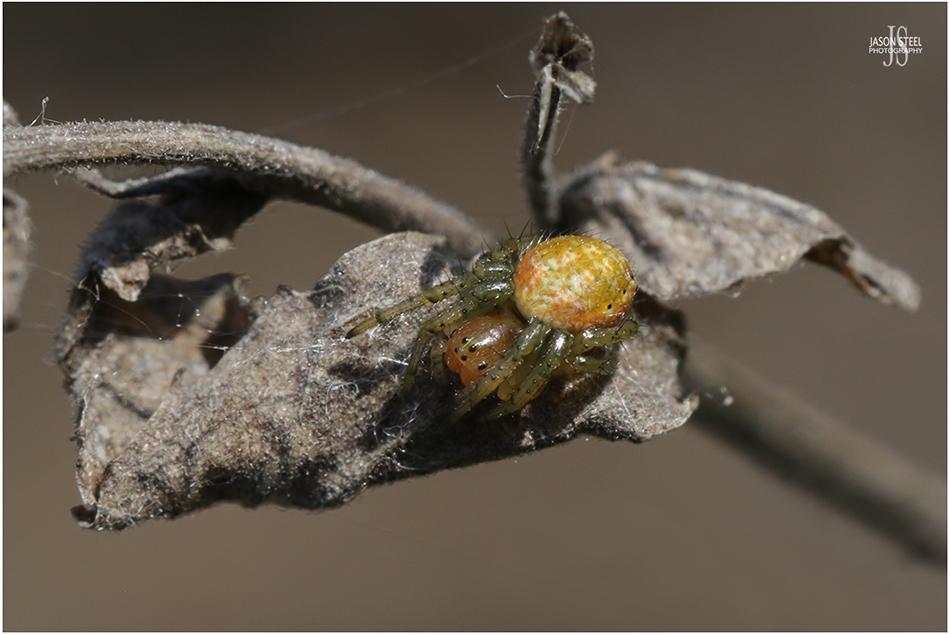
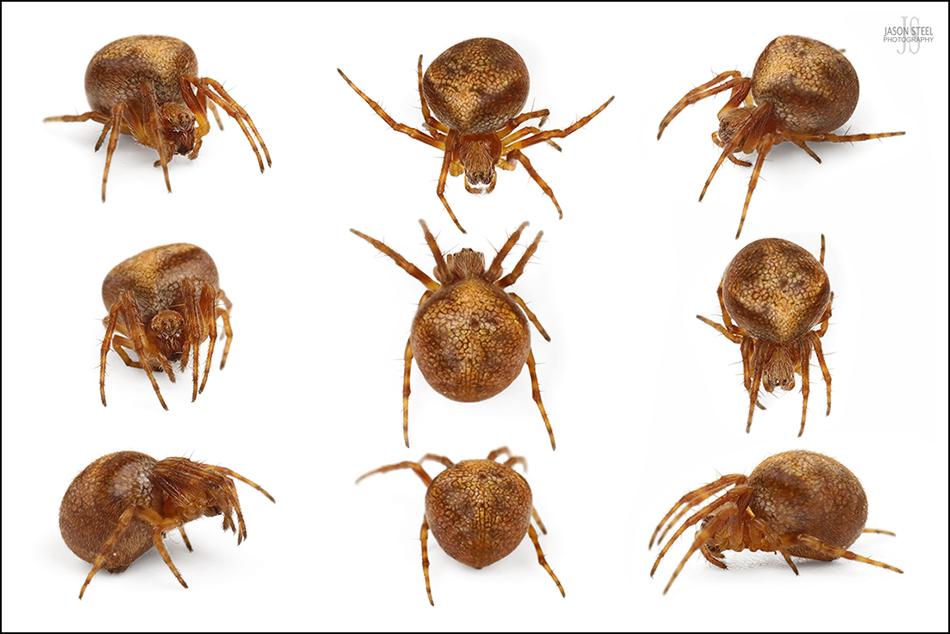
4mm adult female Araneus cf triguttatus, found on umbelliferous flowers surrounded by broadleaved trees in Greenwich Park, SE London, 30th June 2021.
Deciduous Orb-Weaver (Araneus triguttatus)
The Deciduous Orb-Weaver is a small species growing to a maximum of 4-6mm for females and 3-5mm for males. It is usually found between 1-2 metres above the ground in broadleaved trees or shrubs. It is found mainly in the south and south-east of England where it is classed as locally common. The Deciduous Orb-Weaver is impossible to accurately separate from the visually identical Evergreen Orb-Weaver (Araneus sturmi) but knowing where the spider was found is often enough to identify the two similar species. Araneus sturmi is more common and has a wider distribution.
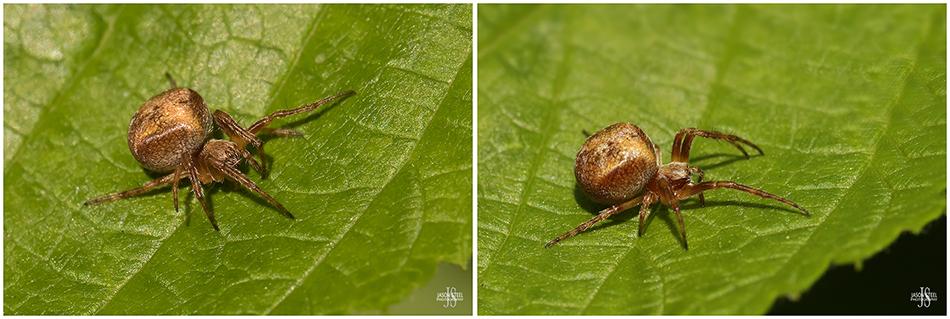
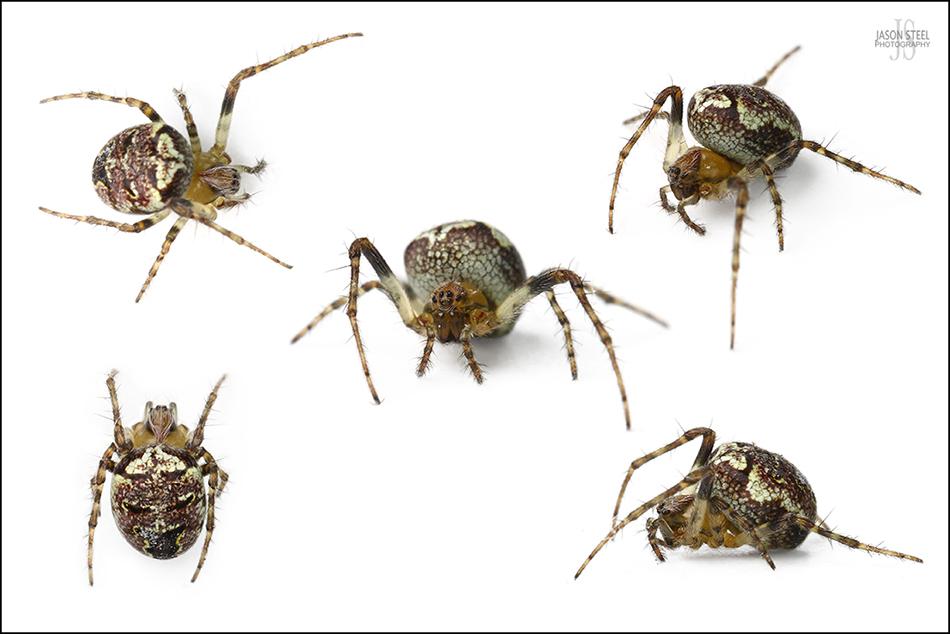
4mm Zilla diodia with two front legs missing. Found under a privet bush in my garden in SE London, 30th April 2020
Zilla diodia Orb Weaver
Zilla diodia is a small orb-weaver with a maximum body-length of around 3.5 - 5mm, with 4mm being typical. It usually builds its web in low vegetation and often in dark shady places. Mainly found in the southern half of Britain, especially the SE of England. The orb-webs are distinctive with a tightly woven lattice area in the centre of the web. Where found it can sometimes be recorded in large numbers. Usually seen sitting in the middle of their orb-web during the daytime.
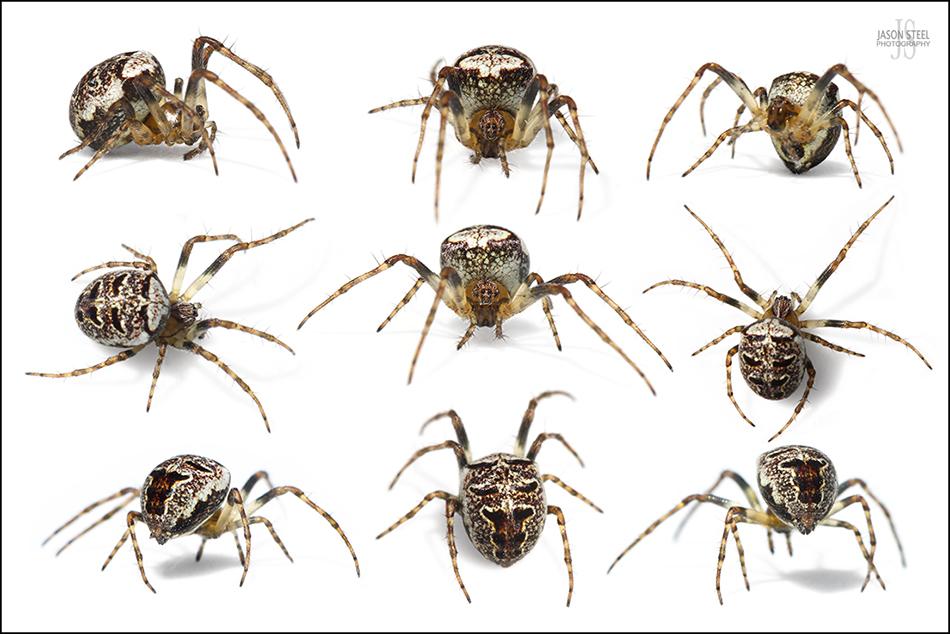
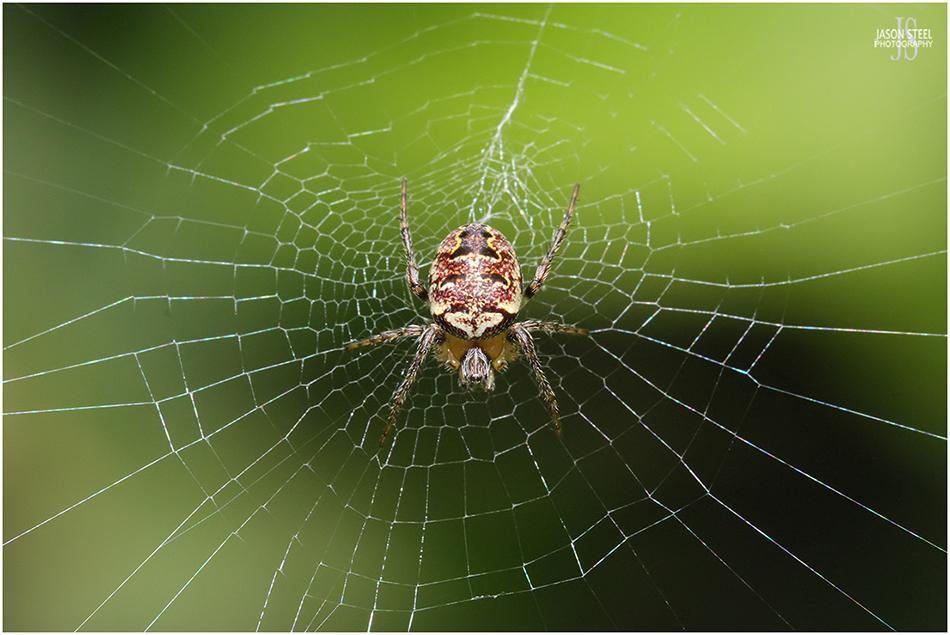
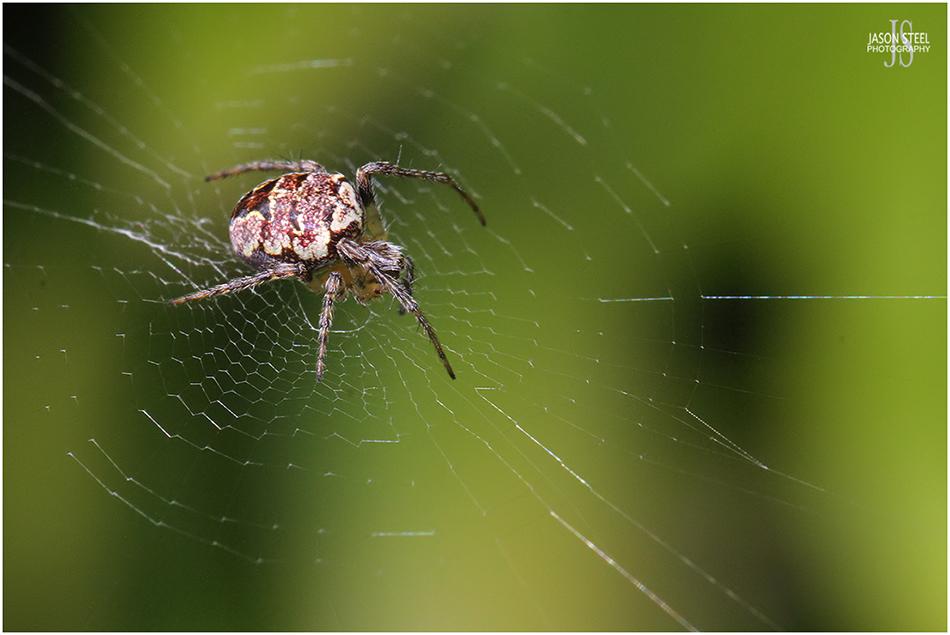
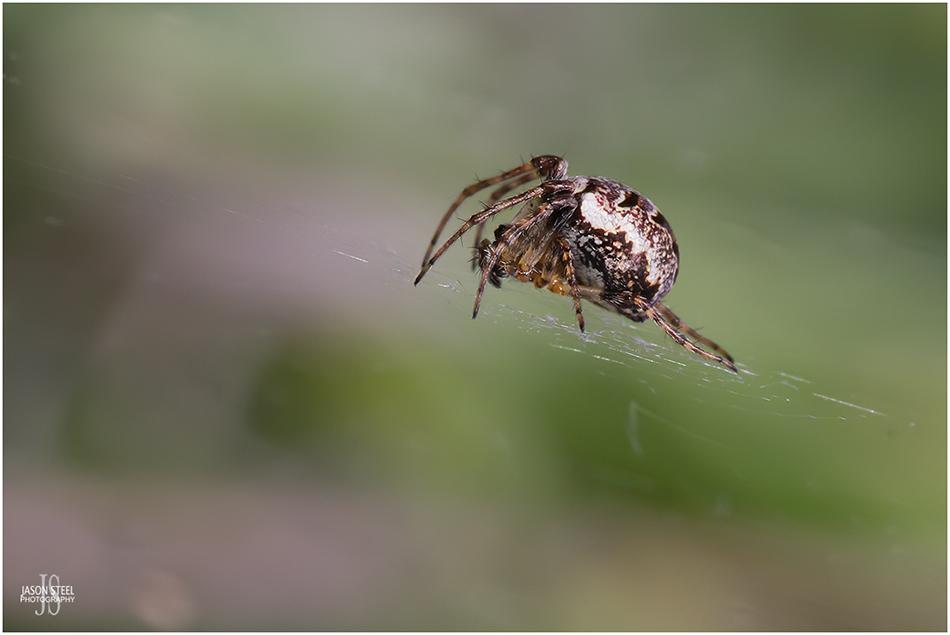
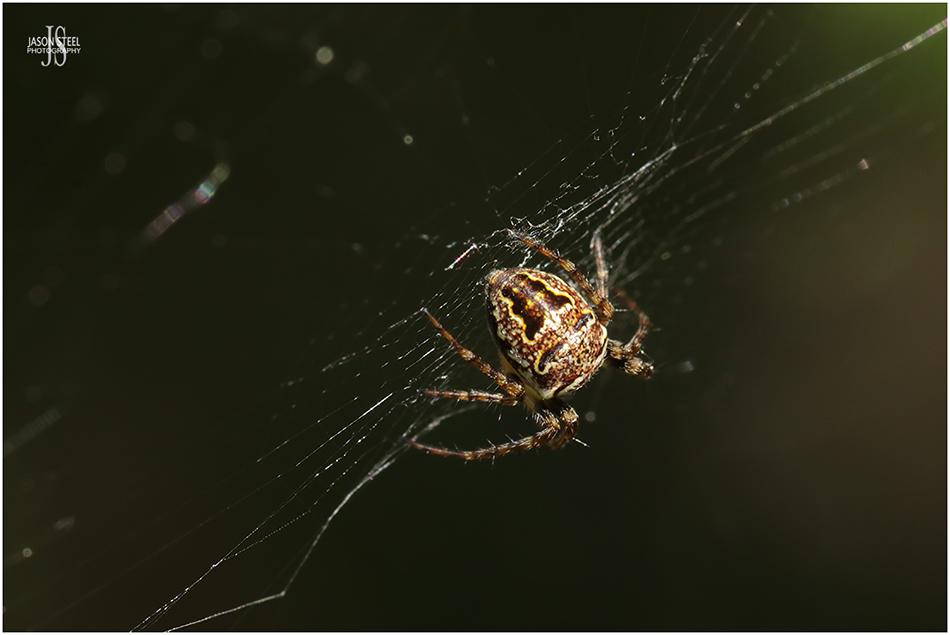
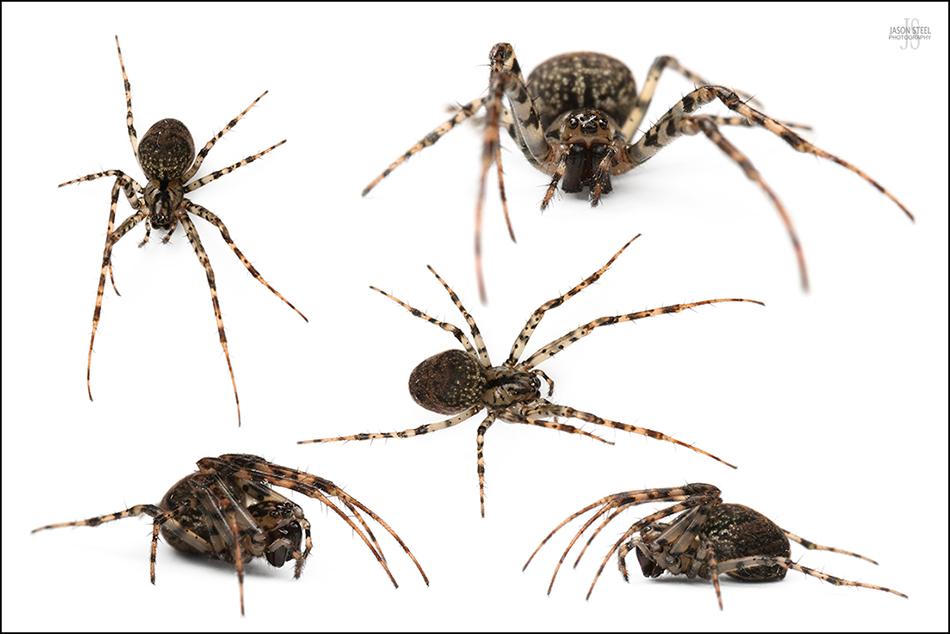
8mm adult female Metellina merianae found at the base of a hollow tree in woodland in SE London, 29th December 2020
Shaded Orb-Weaver (Metellina merianae)
Metallina species are orb-weavers from the Tetragnathidae family of Wide-Jawed Orb-Weavers or Stretch Spiders. Tetragnathidae is one of the UK's smallest spider families, containing just four genera, Metellina, Pachygnatha, Tetragnatha and the Meta genus of Cave Spiders.
There are three species in the Metellina genus that can be found in the UK and all three are common and widespread. In addition they can all be highly variable in colour and patterns. Metellina segmentata and Metellina mengei both share similar habitat and both have the dark "tuning fork" median mark on the light carapace. Metellina merianae is easiest to distinguish as it has a solid dark mark on the carapace instead.
Metellina merianae also prefers rather different habitat to the other two species. Metellina merianae prefers to make its orb-web in dark, damp spots and is most often seen at cave entrances, hollow trees and mammal burrows entrances. Other locations include under vegetation, under grass tussocks, on stream banks with over-hanging vegetation, behind waterfalls and under bridges. Adult specimens can be found all year round but peak in summer and autumn. During the daytime Metellina merianae often hides itself away from its orb-web in a nearby shaded retreat. The spikey pinkish-white egg-sacs are usually seen in June.
Metellina merianae is a small / medium-sized orb-weaver with a typical body-length of around 4.5 - 7mm for males and 5.5 - 9mm for females. Occasionally some specimens reach up to 12mm.
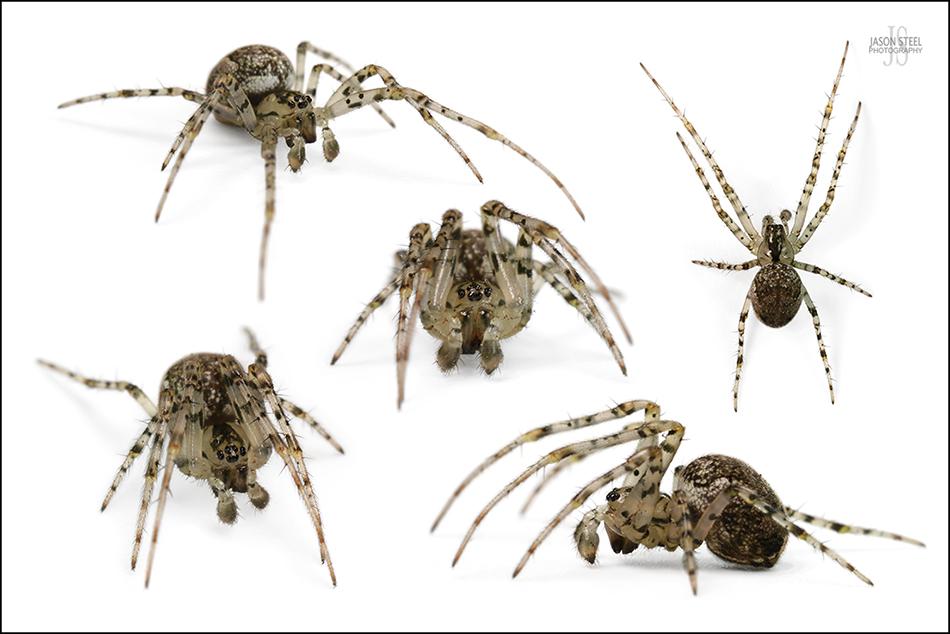
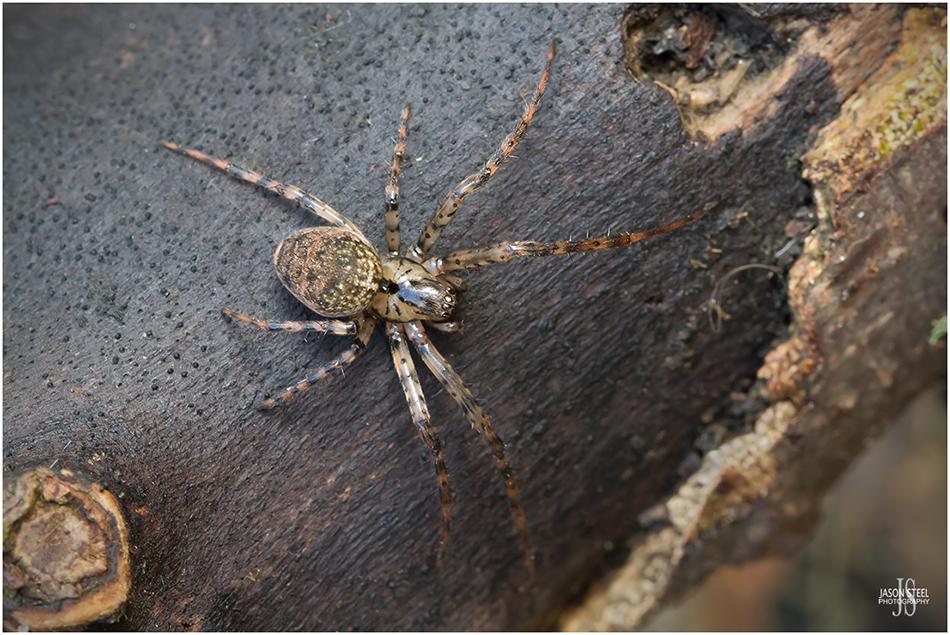
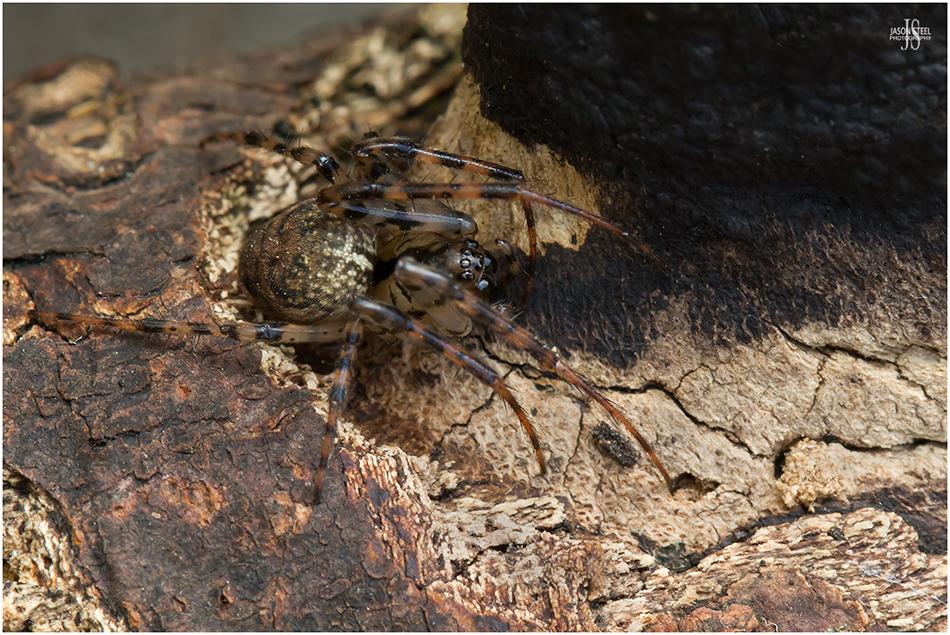
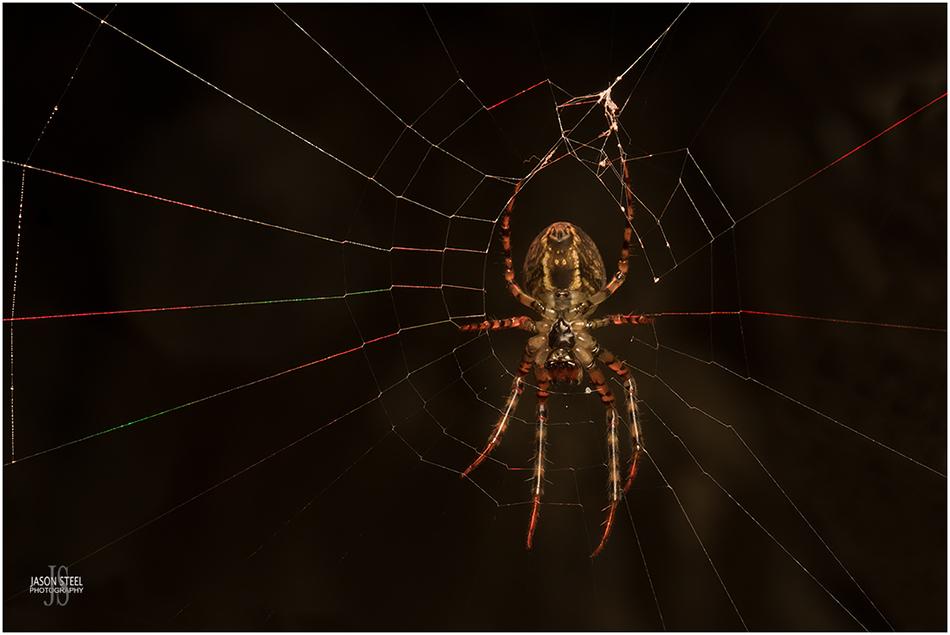
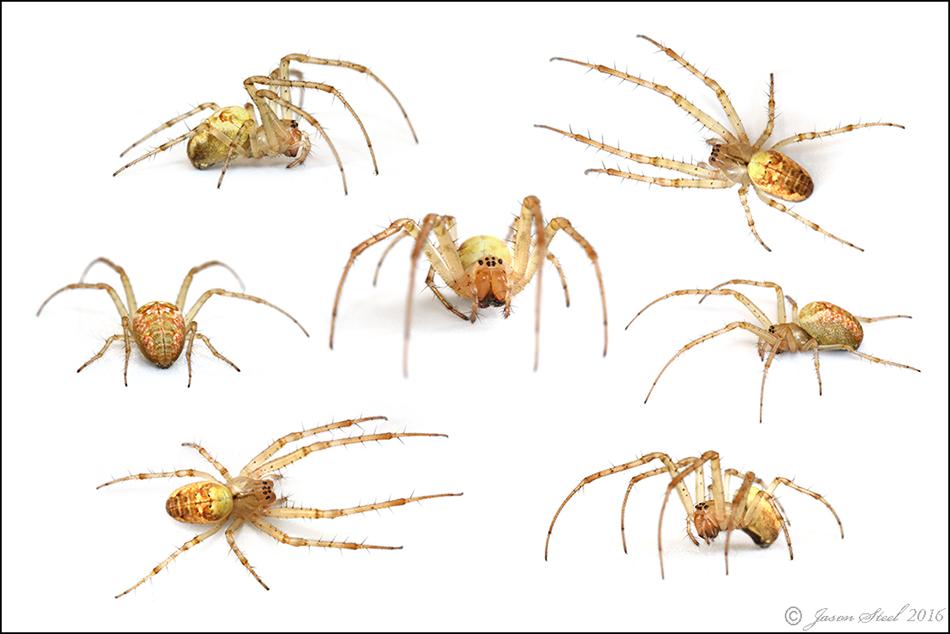
Adult female Common Orb-Weaver (Metellina segmentata) on low tree branch in SE London, 6th September 2016
Common Orb-Weaver aka Lesser Garden Spider, Stretch Spider. (Metellina segmentata)
Metellina segmentata is another of the three commonly found orb-weaver spiders of the Metellina genus and can be found in most types of habitats on vegetation and other structures up to a height of 2 metres in gardens, parks, grassland, waste-ground, hedgerows and woodland. Metellina segmentata is a small orb-weaver with a typical body-length of around 4 - 6mm for males and 4 - 8mm for females. The abdomen can vary in colour from orange, yellow and red to dull light brown. Males are usually darker. Metellina segmentata and Metellina mengei both share similar habitat. Both have the dark "tuning fork" median mark on the light carapace and can be difficult to separate without close examination. These two species are the most common orb-weavers in the UK.
When disturbed these spiders can lay with their legs fully stretched out in-font and behind them, giving rise to the name "Stretch Spider". When stretched out like this they can have a leg-span of up to an inch in length. Adult specimens can be seen all year round but Metellina segmentata are most frequently seen in August and September and are sometimes referred to as the Autumn Orb-Weaver. Whereas adult specimens of Metellina mengei are most frequently seen in spring and early summer. Another way of helping to distinguish between the two species is to look at the underside of the female. With Metellina mengei the black stripe beneath the abdomen usually extends forward past the epigyne but with Metellina segmentata the black line usually ends at the epigyne.
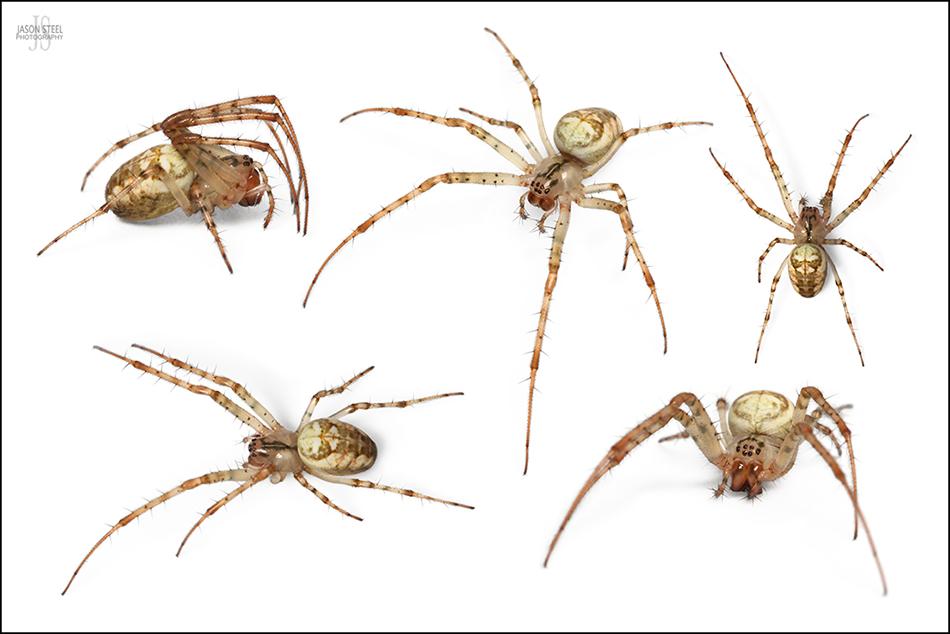
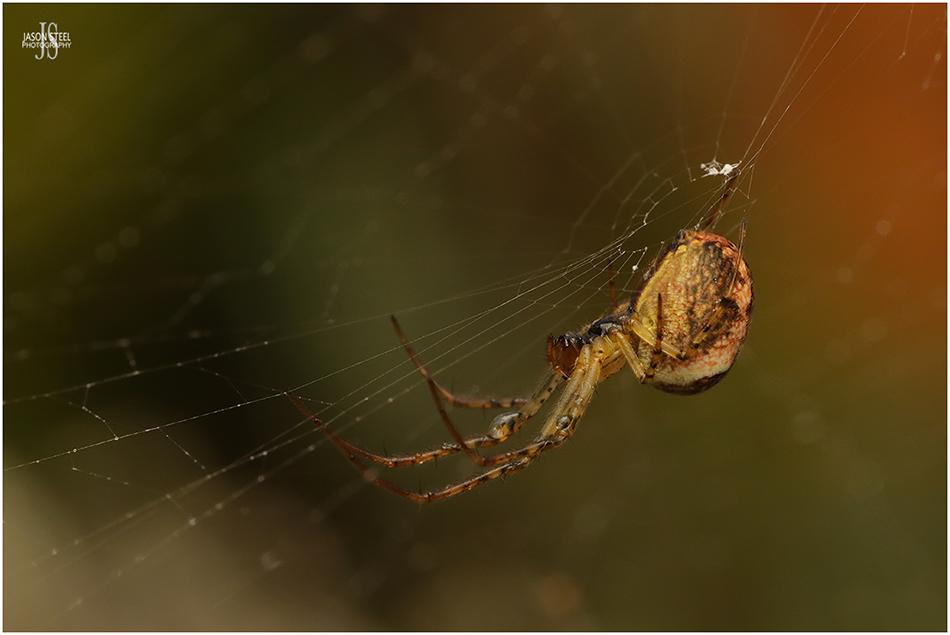
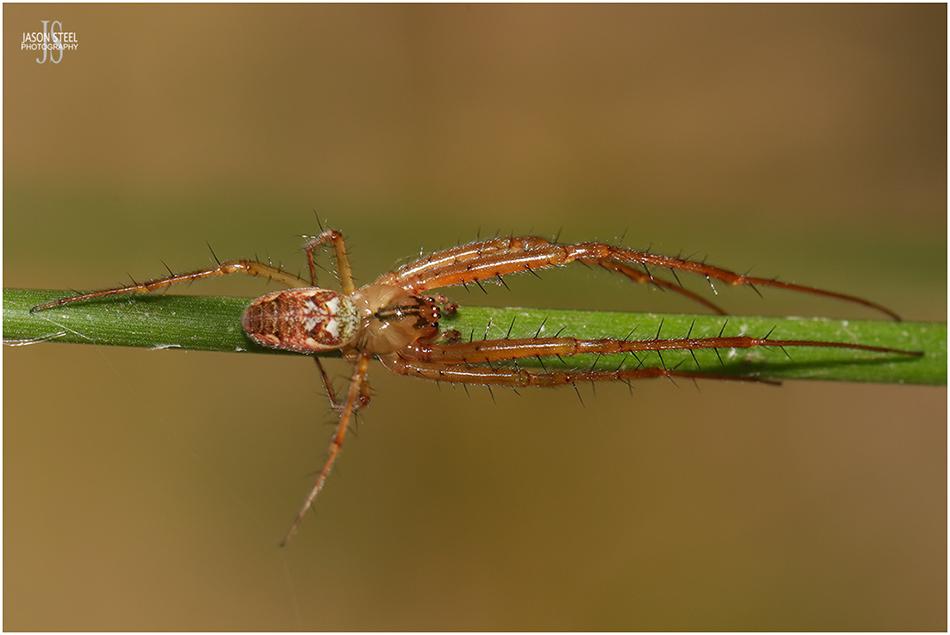
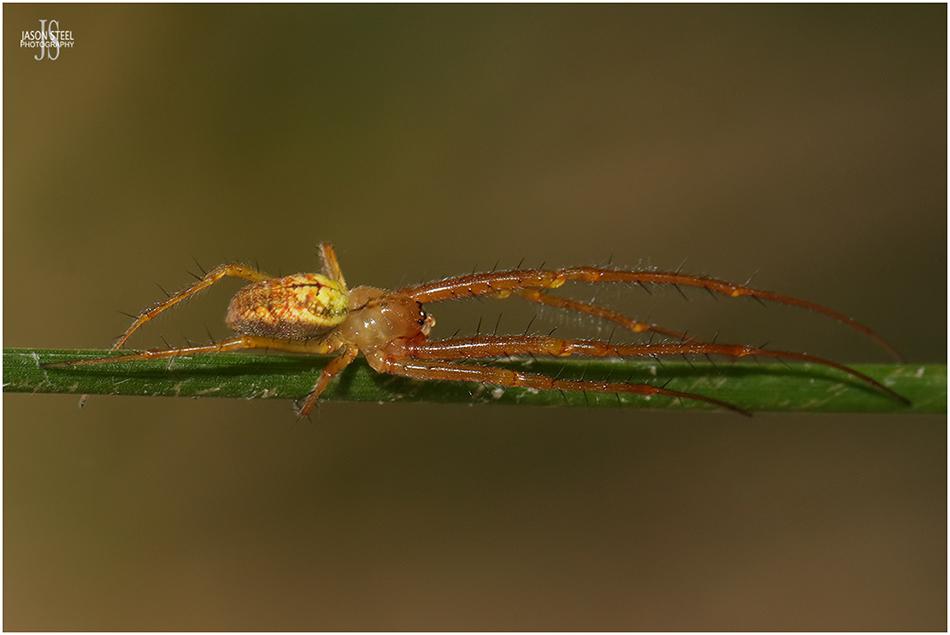
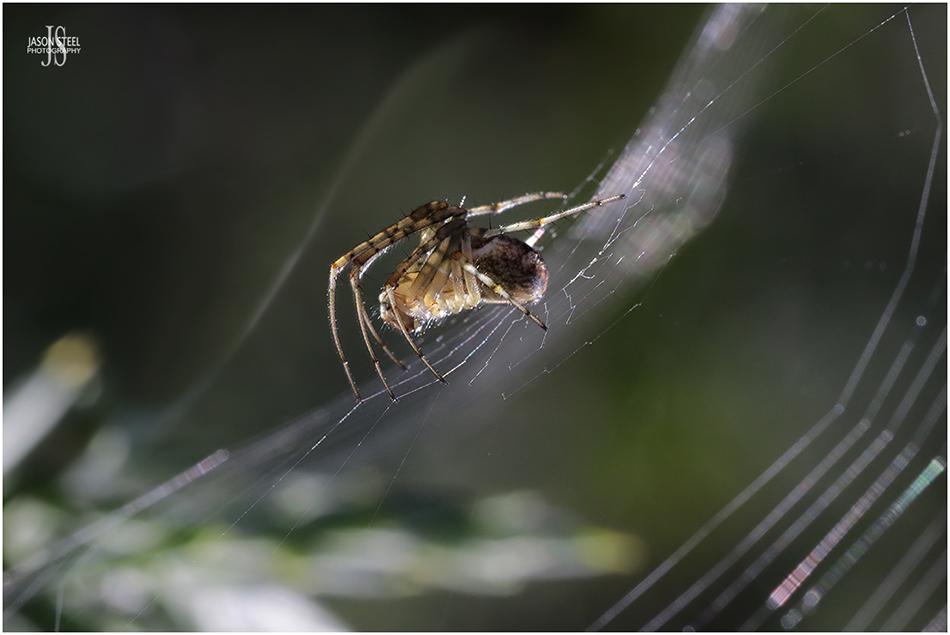
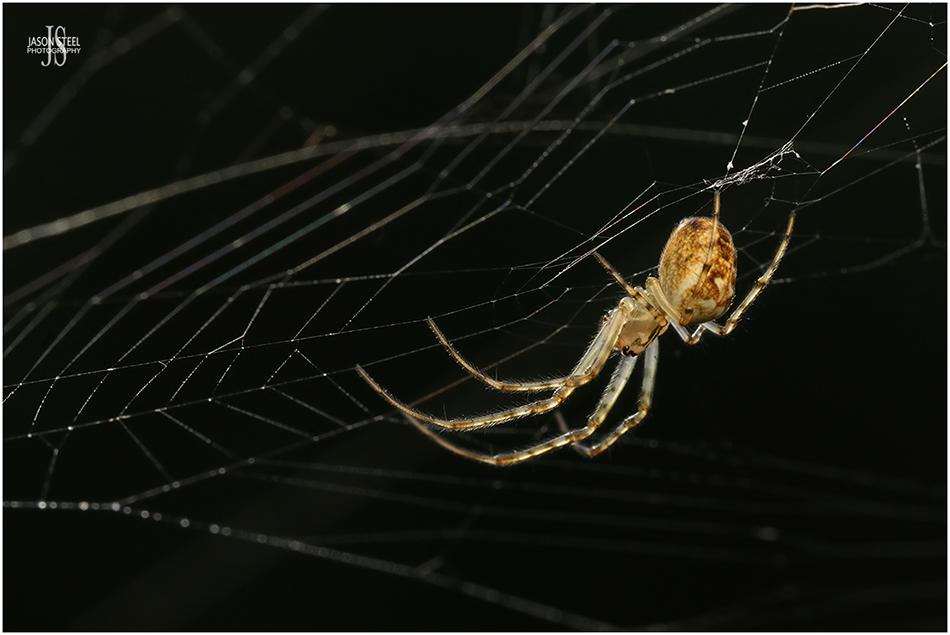
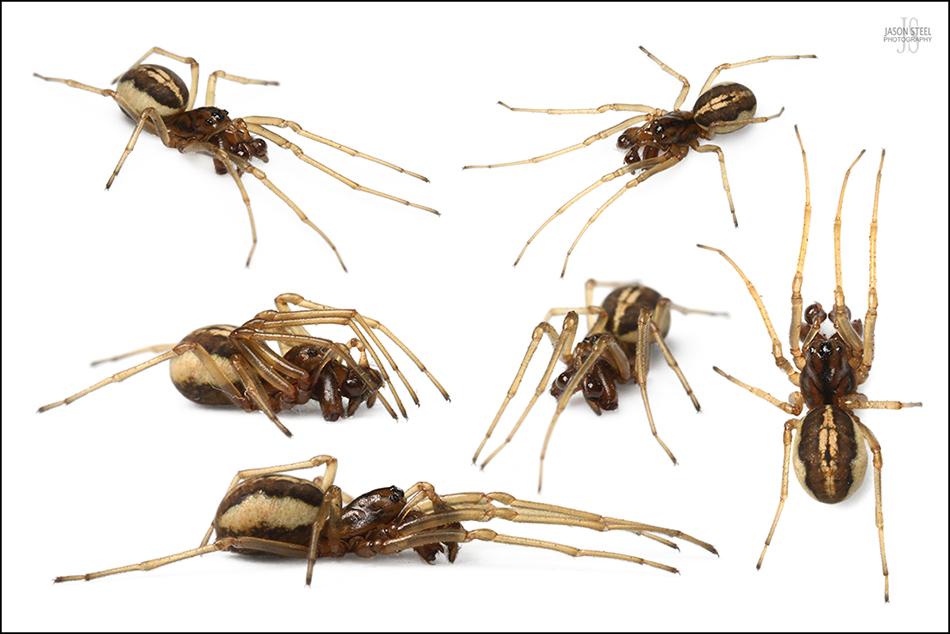
6-7mm male Clerck's Thick-Jawed Spider found on low vegetation at the water's edge in a wetlands site in SE London, 27th November 2020
Clerck's Thick-Jawed Spider (Pachygnatha clercki)
Clerck's Thick-Jawed Spider is a small orb-weaver from the Tetragnathidae family of Wide-Jawed Orb-Weavers. Males usually grow to a maximum body-length of around 5-6mm, whilst the slightly larger females usually reach around 6-7mm. Clerck's Thick-Jawed Spider is common and widespread across the UK.
Juvenile and sub-adult specimens build an orb-web amongst low vegetation in wetland habitats at the water's edge. Clerck's Thick-Jawed Spider is one of three species of Pachygnatha found in the UK, however both the other species, P.listeri & P.degeeri, are both slightly smaller than Pachygnatha clercki. Male and female specimens are similar in appearance but the males show a higher degree of contrast in the light and dark areas of the abdomen. As with all species of Pachygnatha, once fully mature these spiders leave the web and become active cursorial hunters, searching for prey at ground level. Whilst Pachygnatha species possess the long chelicerae typical of Wide-Jawed Orb-Weavers they lack the elongated body that other genus in the Tetragnathidae family exhibit.
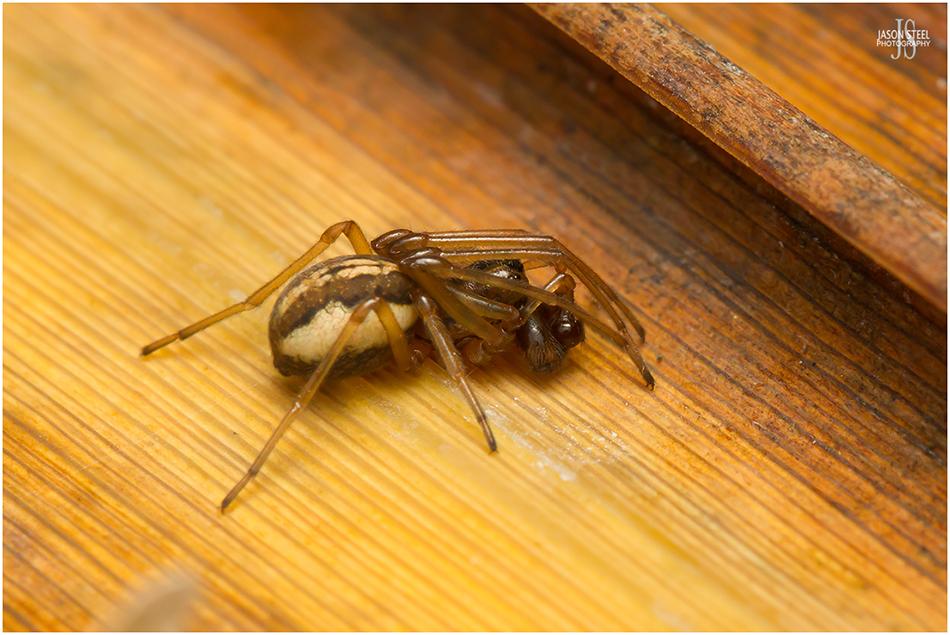
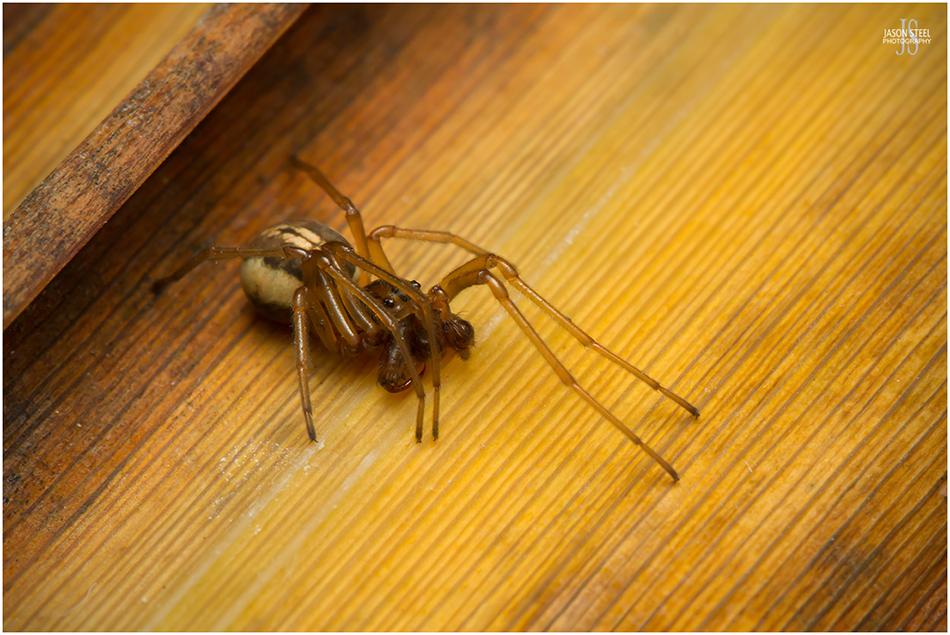
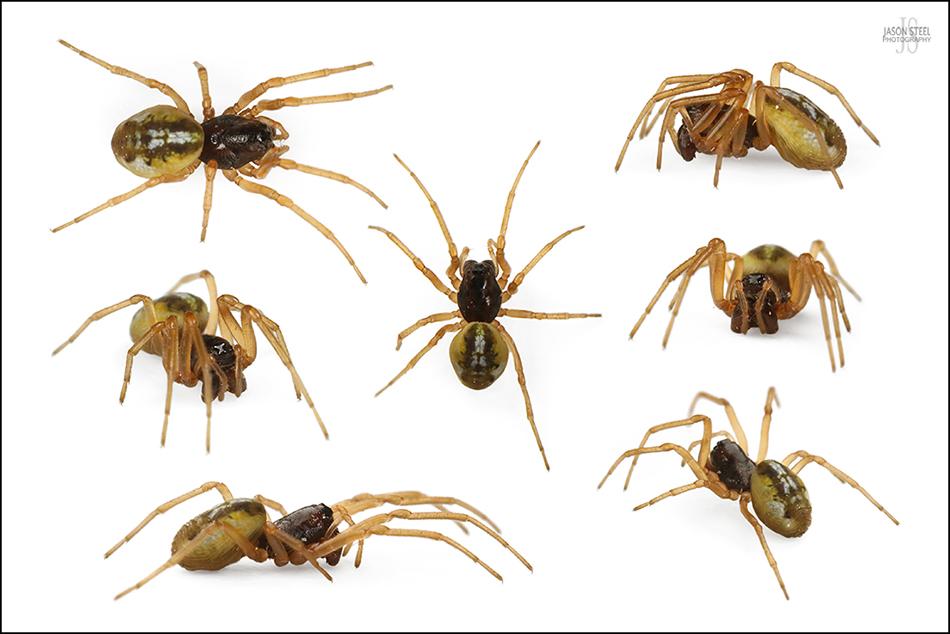
3mm adult female Thick-Jawed Spider found on short grass in my garden in SE London, 5th July 2021.
Degeer's Thick-Jawed Spider (Pachygnatha degeeri)
Degeer's Thick-Jawed Spider is a very small orb-weaver from the Tetragnathidae family of Wide-Jawed Orb-Weavers. This is one of the most widespread and common species of Wide-Jawed Orb-Weaver which can be found in most habitats, usually in the summer. Males grow to a maximum body-length of around 2.5-3mm, whilst the slightly larger females usually reach around 3-4mm. Adult specimens are found amongst low vegetation often under grass tussocks. Only juveniles build tiny orb-webs. As with other Pachygnatha species the adults prey on small invertebrates caught at ground level. The colour / shade of the abdomen can vary considerably.
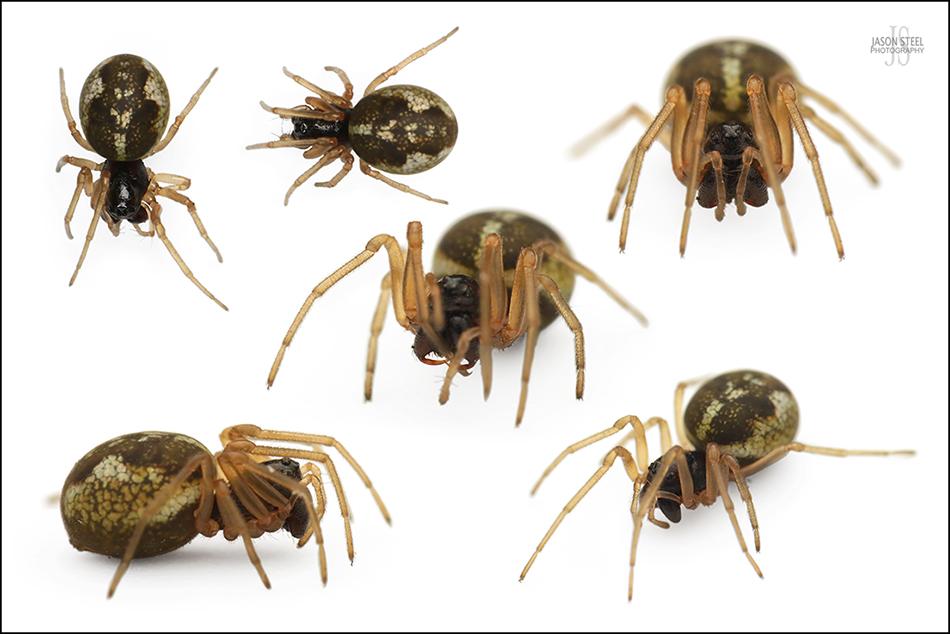
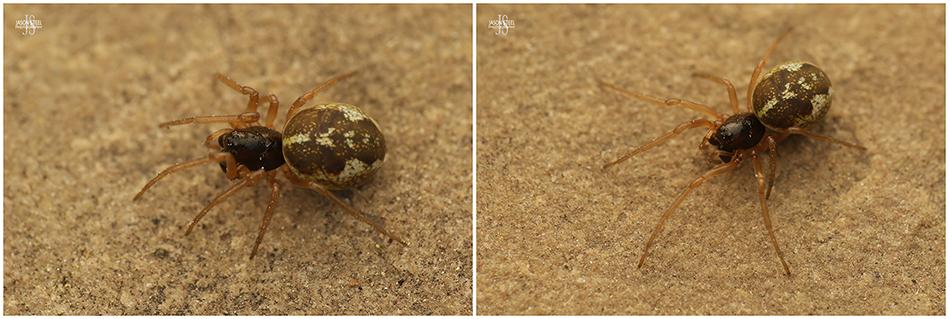
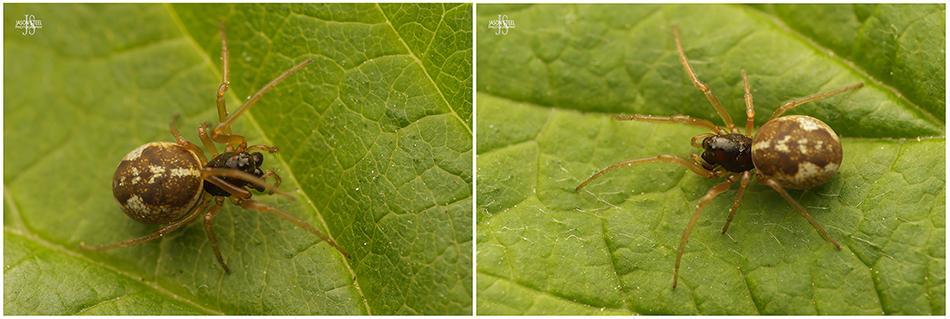
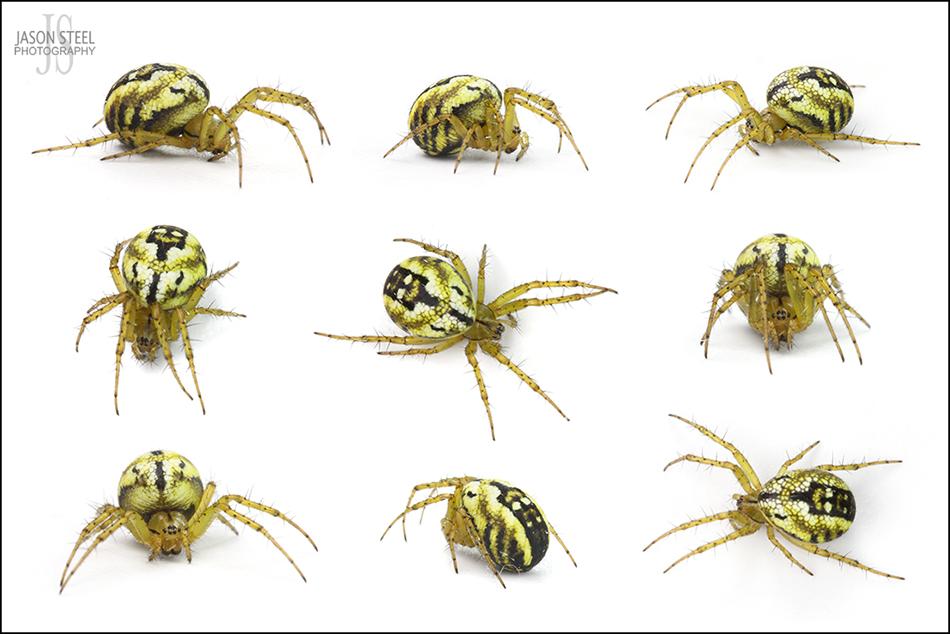
Adult female Lined Orb-Weaver Spider - Mangora acalypha
Lined Orb -Weaver Spider / Cricket-Bat Orb-Weaver - Mangora acalypha
The Lined Orb-Weaver Spider, from the family Araneidae (orb-weavers), produces small tightly woven orb-webs in low vegetation such as heather and gorse growing in dry sunny locations. This species is common throughout Europe but in the UK it is found mainly in the SE of England. They have a small body-length of 5-6mm for the female and 3-3.5mm for the male.
Adults are highly variable in colour ranging from green to yellow to orange or red and brown. Mangora acalypha are the only species of this genus in the UK and are easily recognisable in the field. Adult specimens have black stripes along the sides of the abdomen and a distinctive black rectangle marking with light spots on the top of the abdomen. Adult specimens can usually be found from May to July but occasionally from April to October.
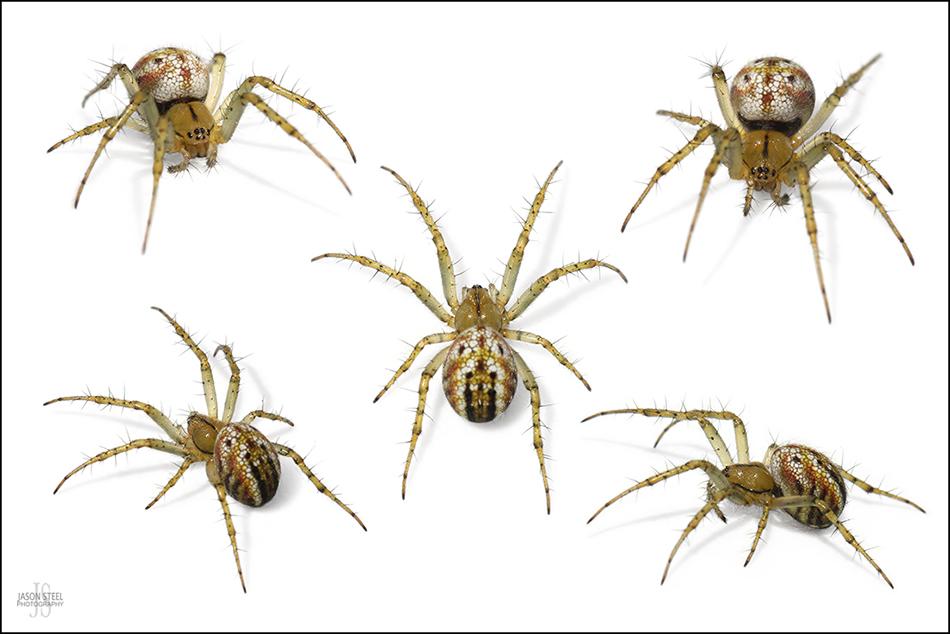
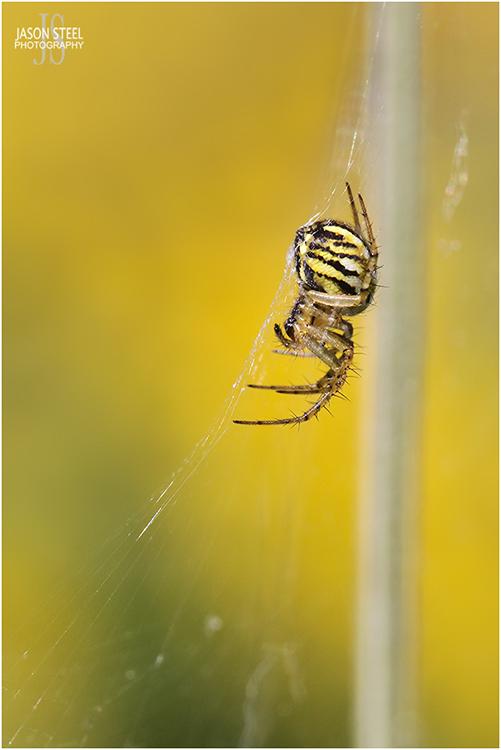
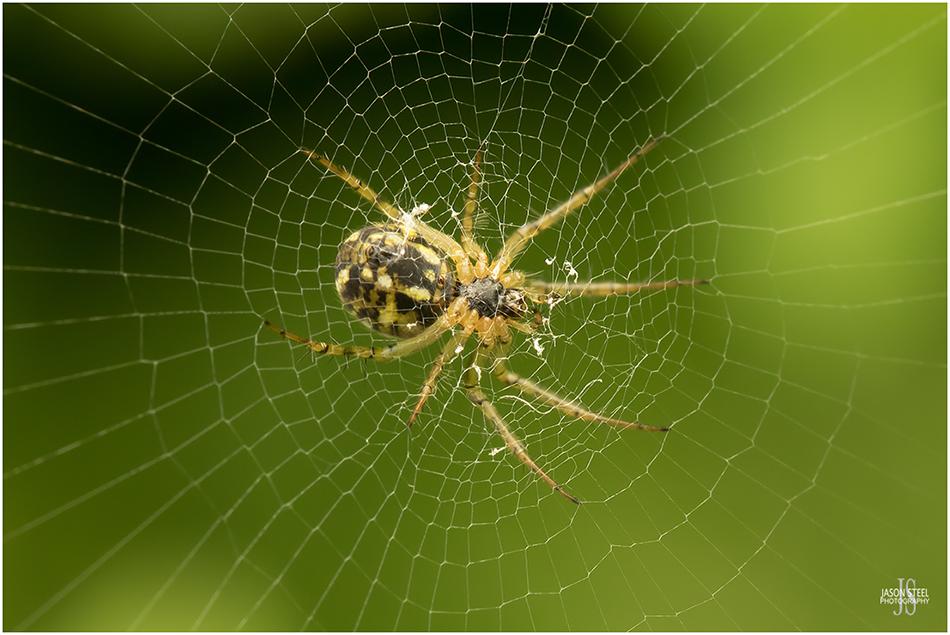
4mm Lined Orb-Weaver Spider in my SE London garden, 29th June 2021.
The Lined Orb-Weaver Spider, Mangora acalypha, has a tightly woven lattice area in the centre of the web, very similar to Zilla diodia. It's not uncommon for the Cricket-Bat Spider to be mis-identified as a young Wasp Spider. Not only are the two spiders very different, but so are their webs. The orb-web of the Wasp Spider is loosely formed with the distinctive zig-zag stabilimenta and isn't anywhere near as pretty as these little webs.
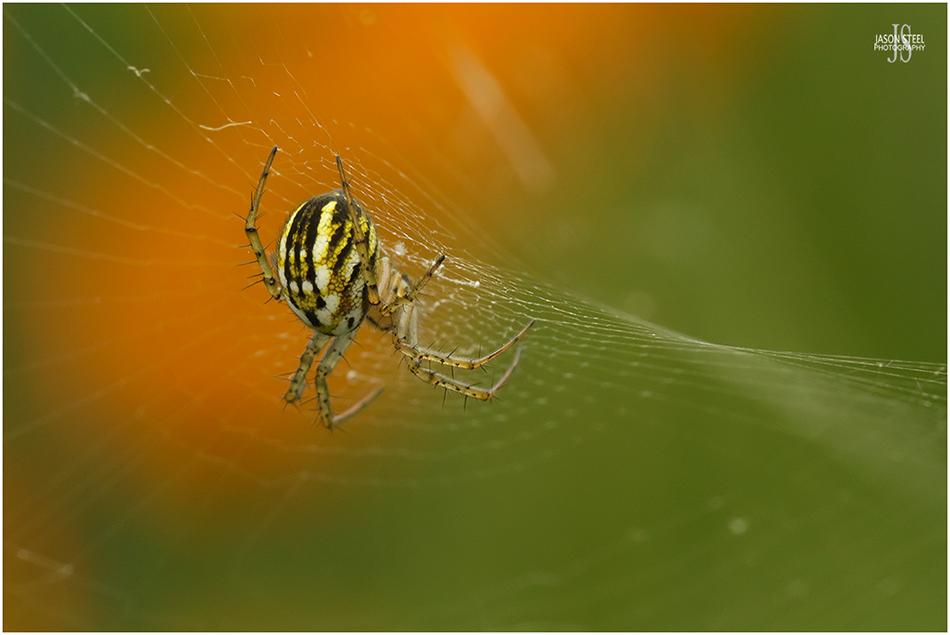
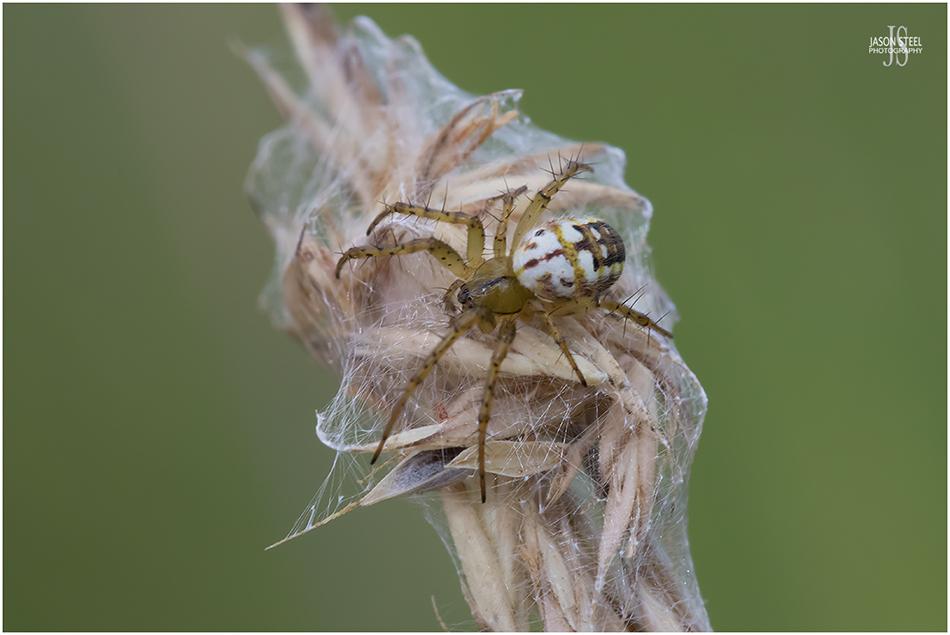
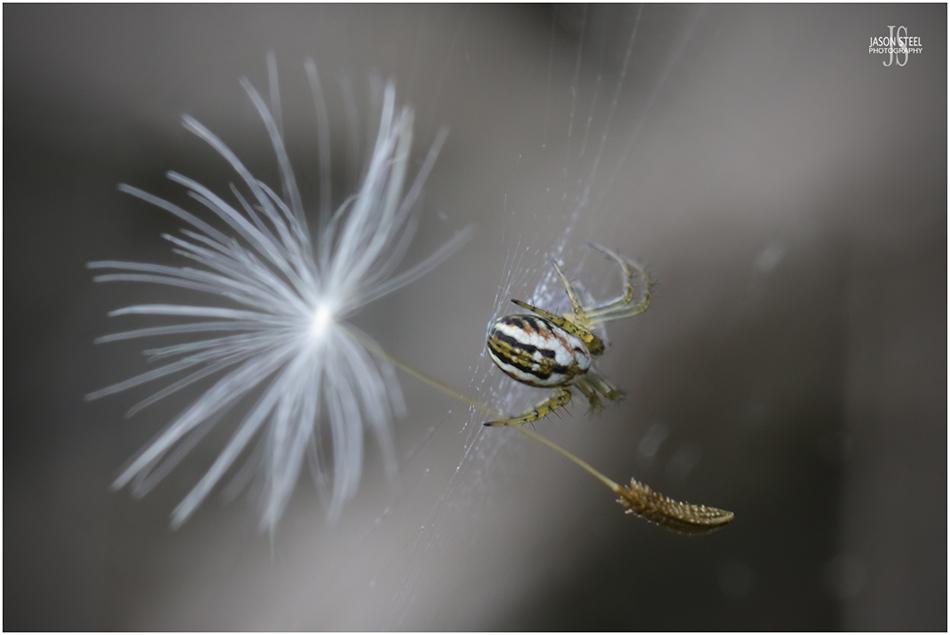
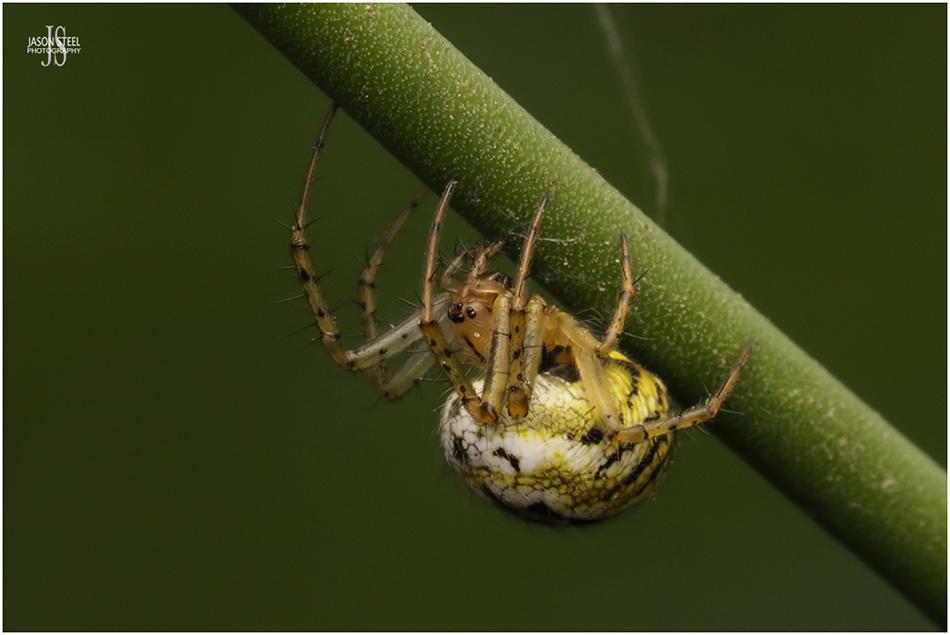
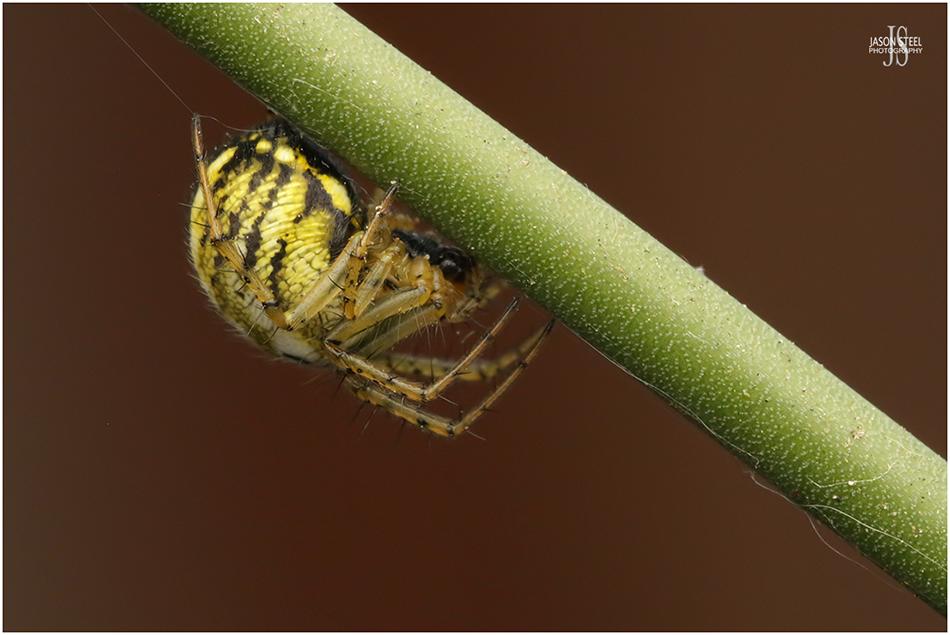
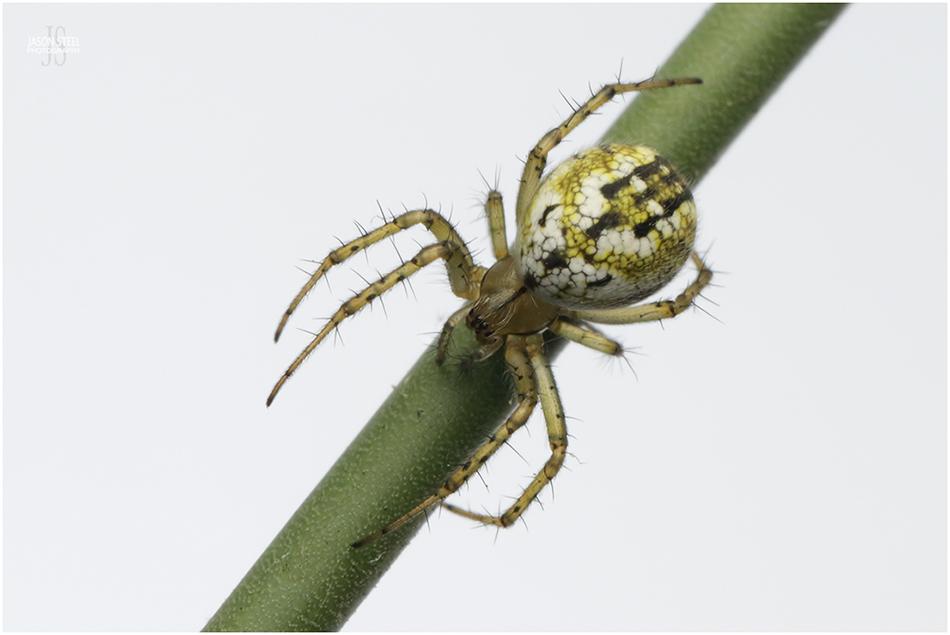
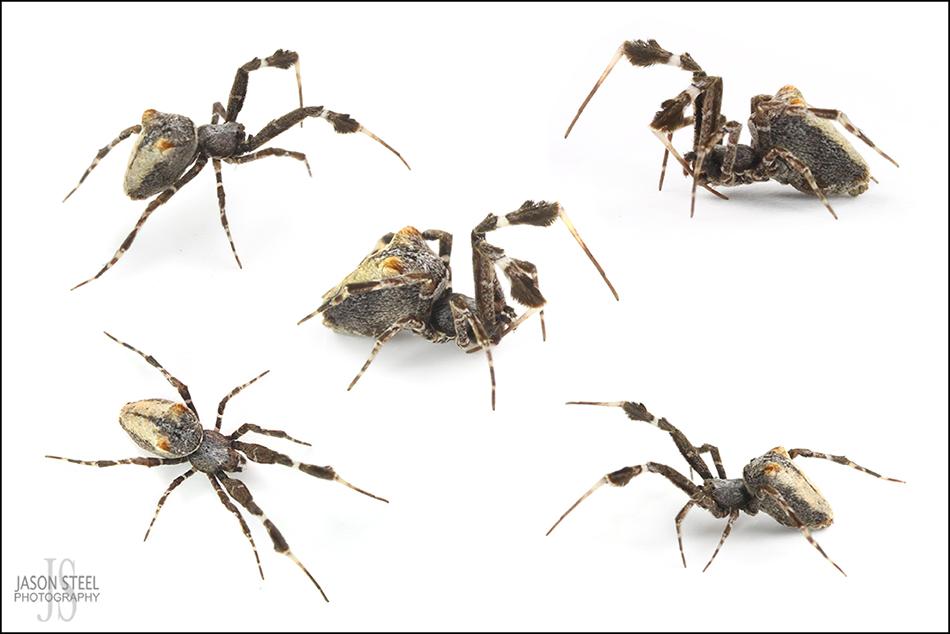
6mm adult female Uloborus plumipes found in a nursery / butterfly house in SE London 28/09/2017.
Feather Legged Spider / Greenhouse Spider (Uloborus plumipes)
There is only one family of spiders in the UK that does not use venom to subdue and kill its prey. These spiders have no venom glands at all and rely on their prey becoming entangled in their web before they move in and completely wrap their prey in silk, and then inflict a bite. This is the Uloboridae family of Cribellate Orb-Weavers. In the UK there are three species from two genus.
There are two similar Uloborus species in the UK, Uloborus plumipes and Uloborus walckenaerius. These small non-native spiders are sometimes used in greenhouses and garden centres as a biological control for Greenfly, Whitefly and other pests. It is believed that Uloborus plumipes probably arrived in the UK accidentally from the Netherlands, amidst imports of plants, and have been found in the UK since 1992. Uloborus plumipes are now very common and widespread in greenhouses, botanical gardens and indoor nurseries across the UK. This species requires a warm and humid habitat and is not generally found outdoors in the UK. In warmer countries, even as close as France, Uloborus plumipes can regularly be found outdoors as well as indoors. Uloborus plumipes is now so widespread across the world that it's not entirely clear which country it originated from
Females can have a maximum body-length of around 6mm, whilst the smaller males usually only reach 4mm. Males lack the two lumps seen on the abdomen and the feathery tufts on the front legs of the female.
The more scarce Uloborus walckenaerius is a native, and nationally rare species, and is mainly recorded at just a few heathland sites in central-southern England. The front legs of Uloborus walckenaerius are slightly thicker and less tubercula than Uloborus plumipes.
The third and final member of the non-venomous Uloboridae family is Hyptiotes paradoxus. A distinctive species with far shorter and thicker front legs than Uloborus plumipes and Uloborus walckenaerius. Hyptiotes paradoxus is found in mixed woodland on evergreen trees and shrubs such as Yew and Box. It's distribution is scarce and scattered across England and Wales.
